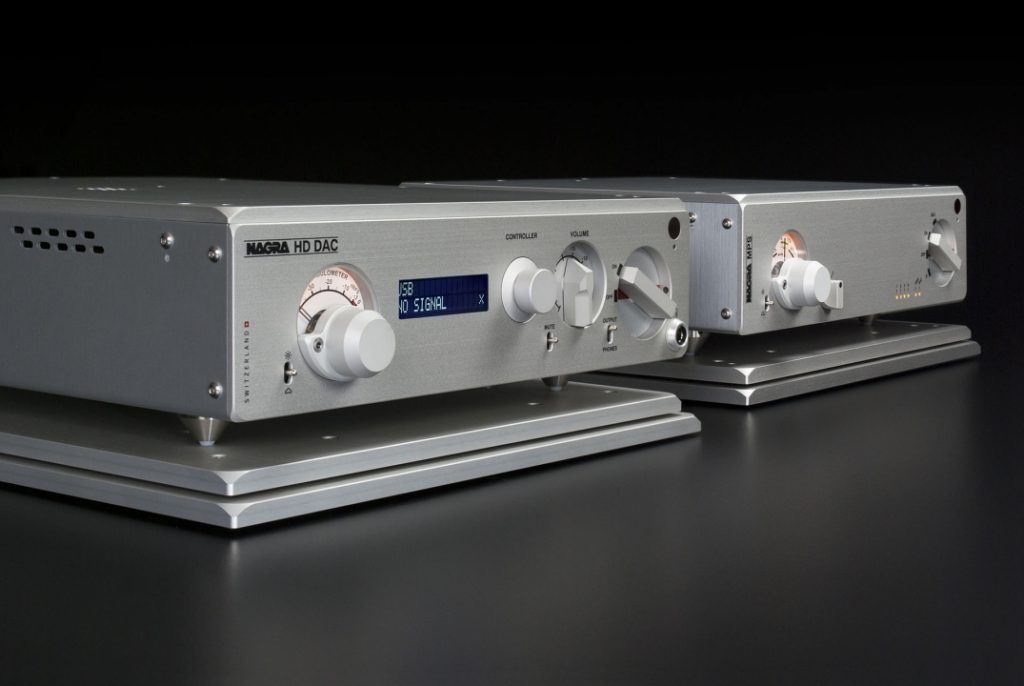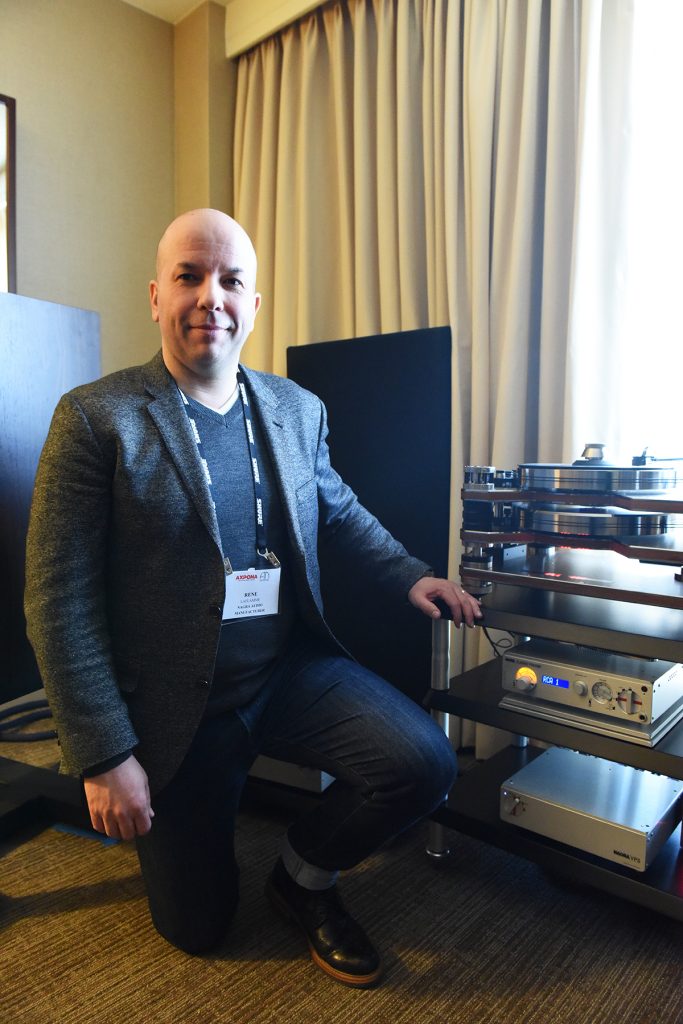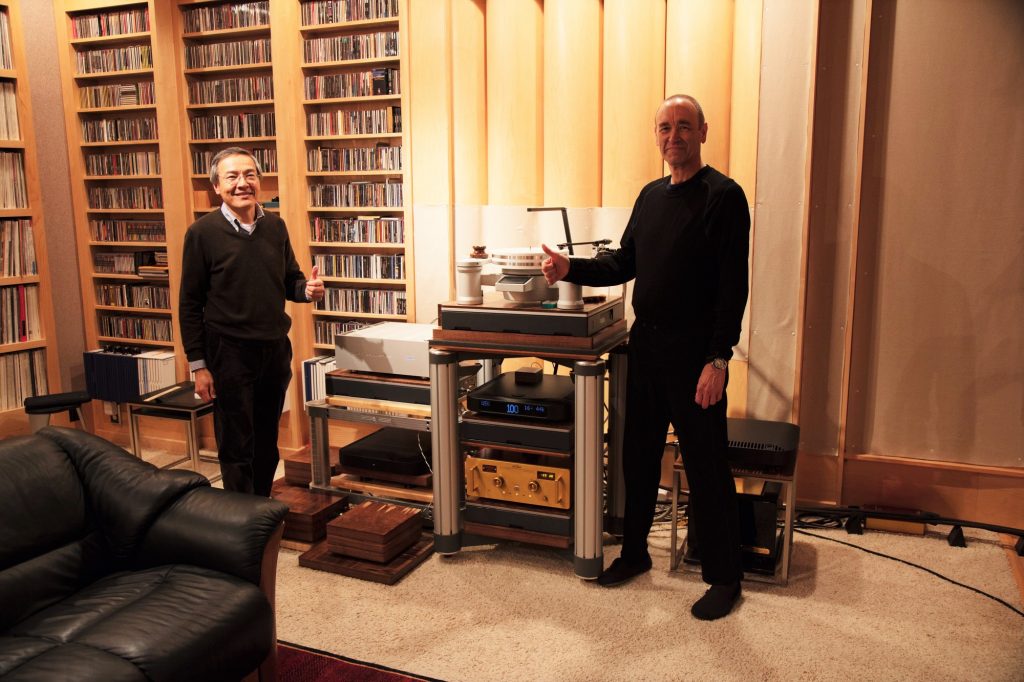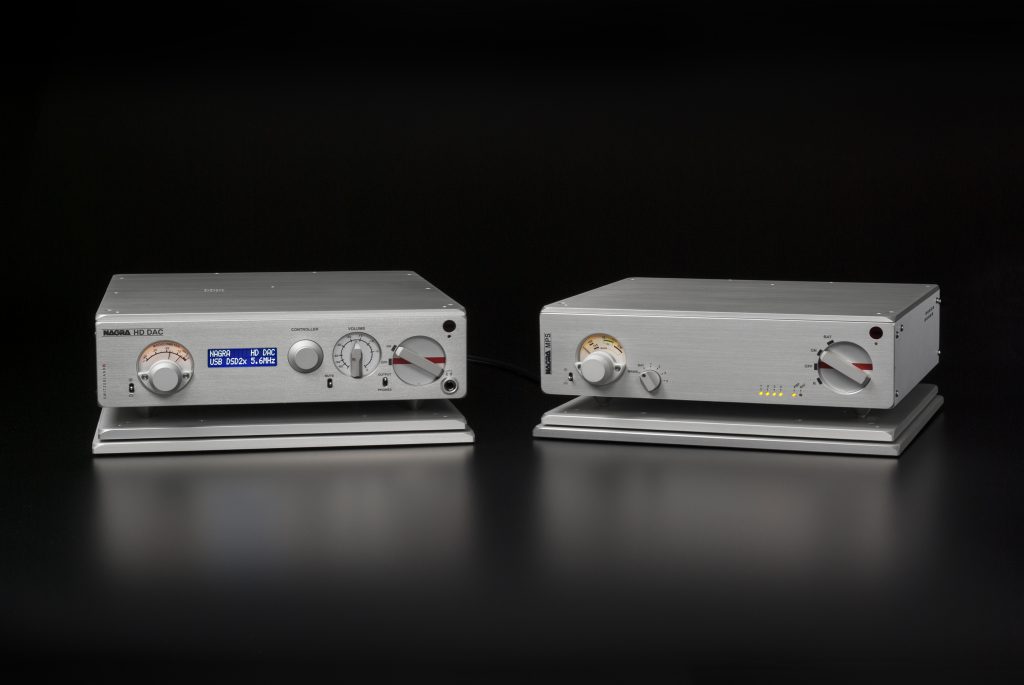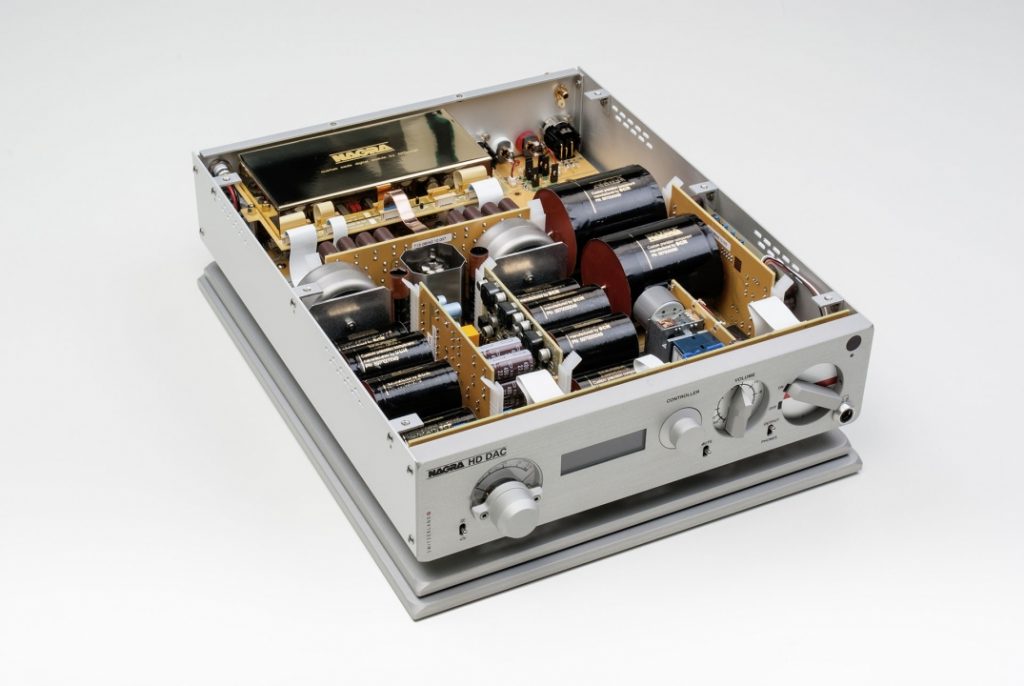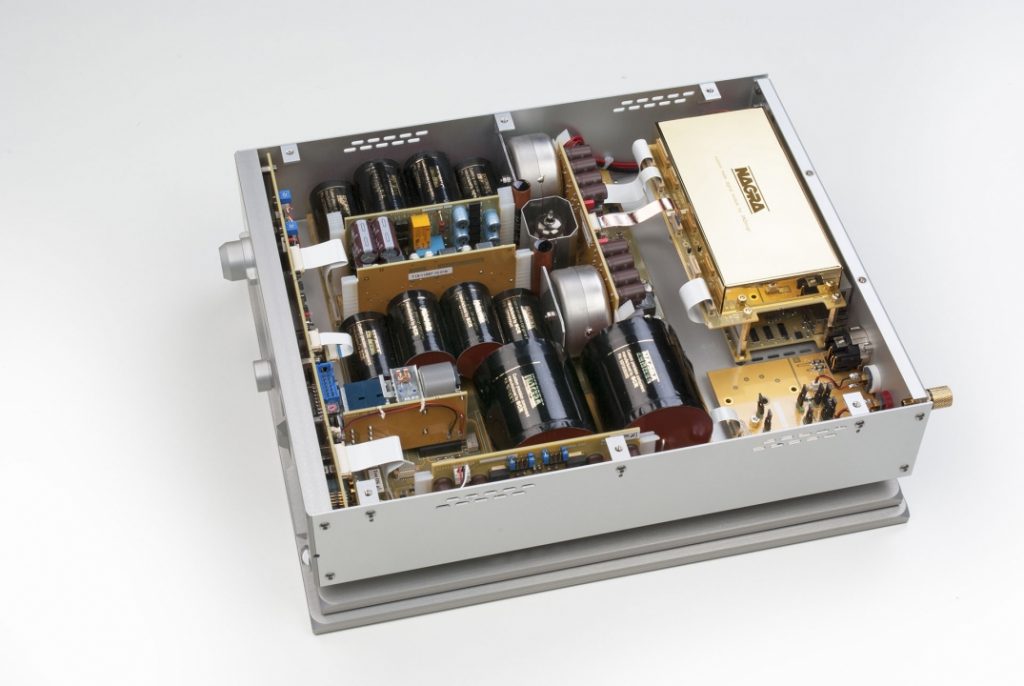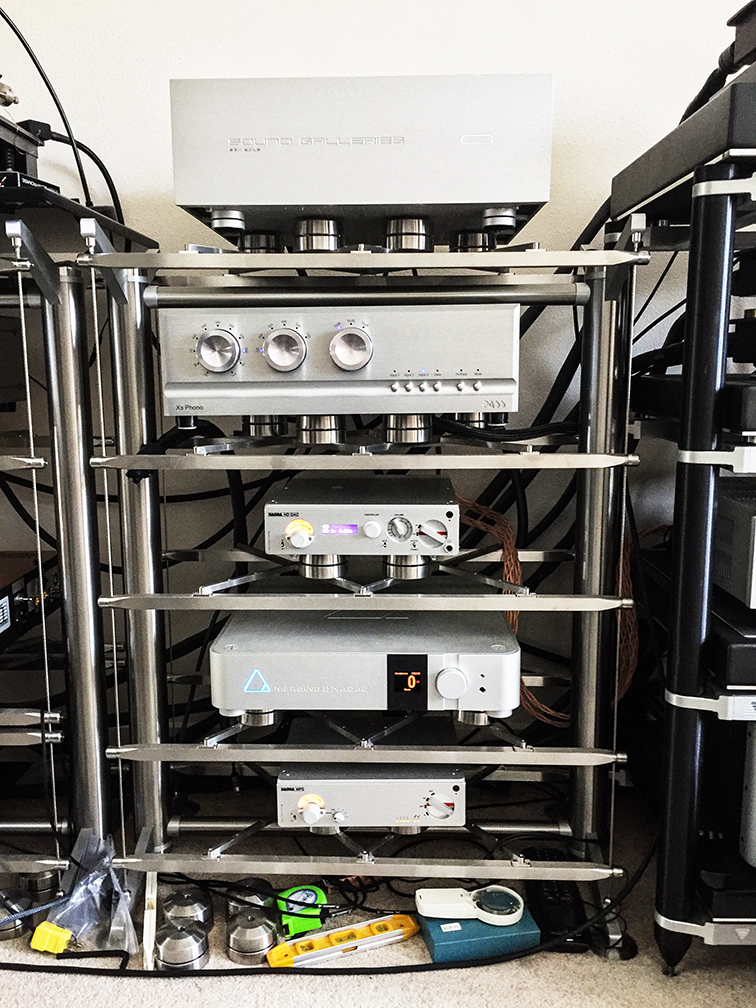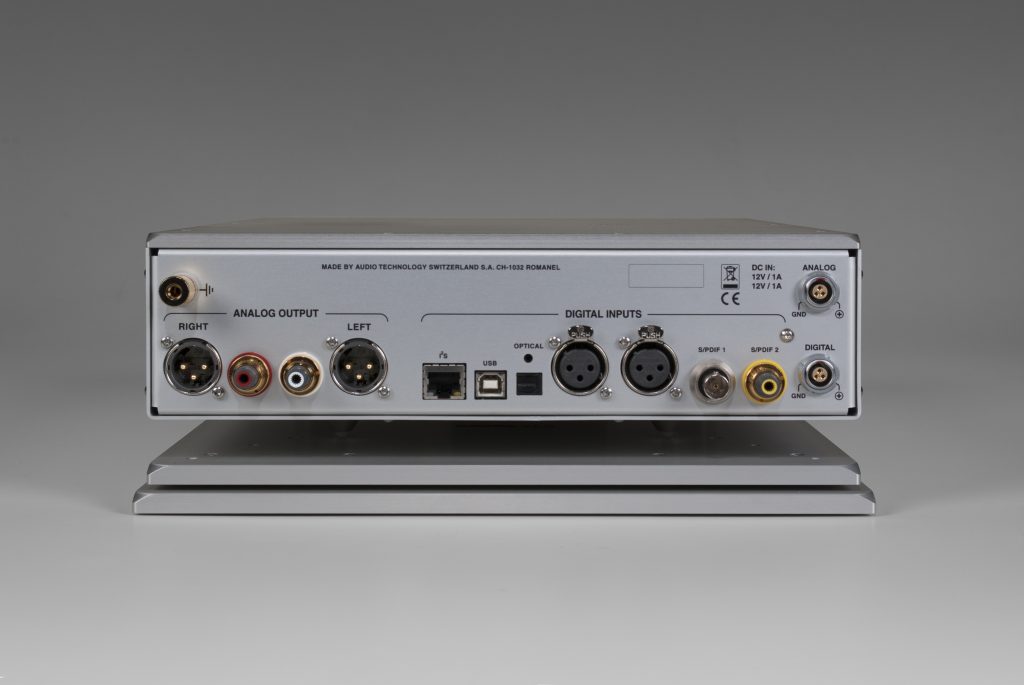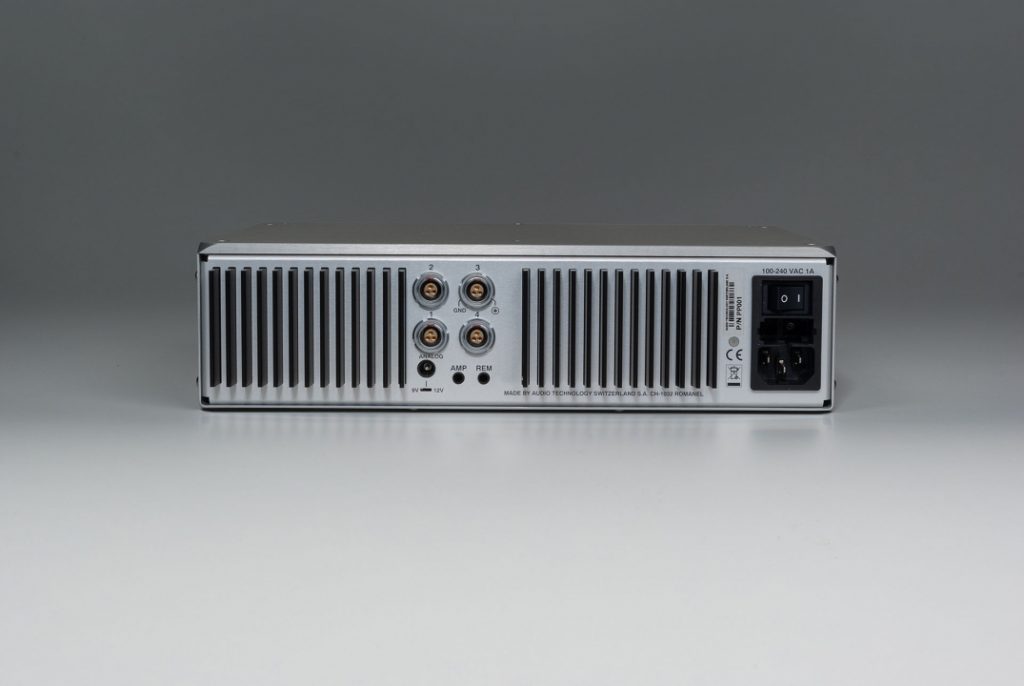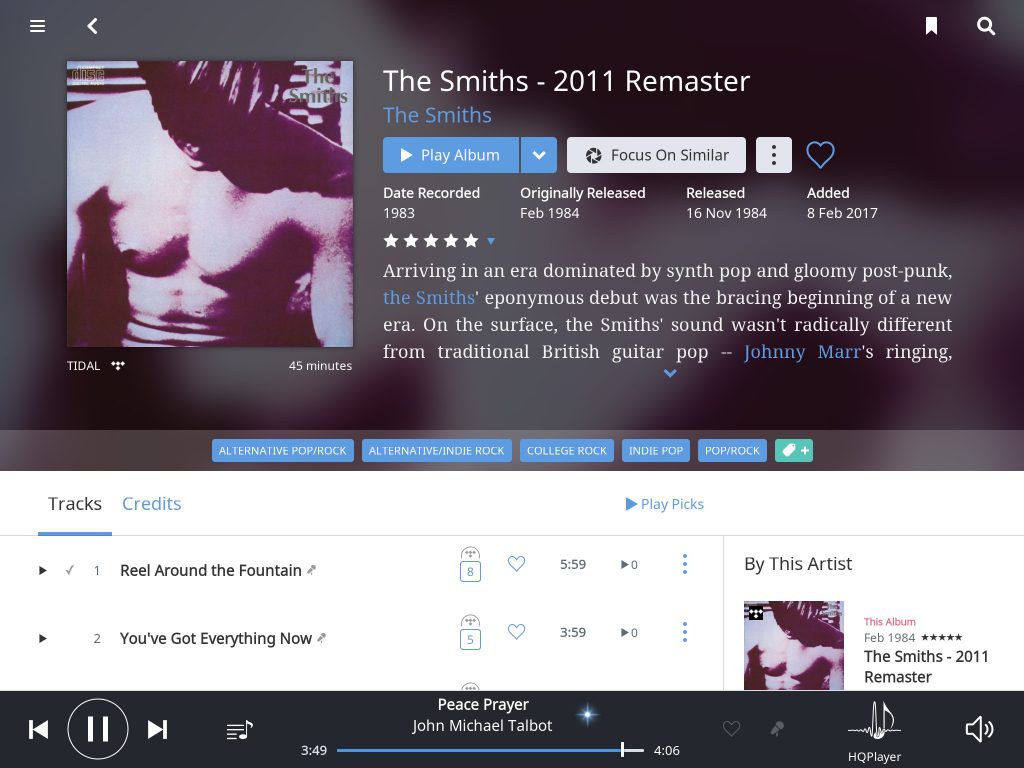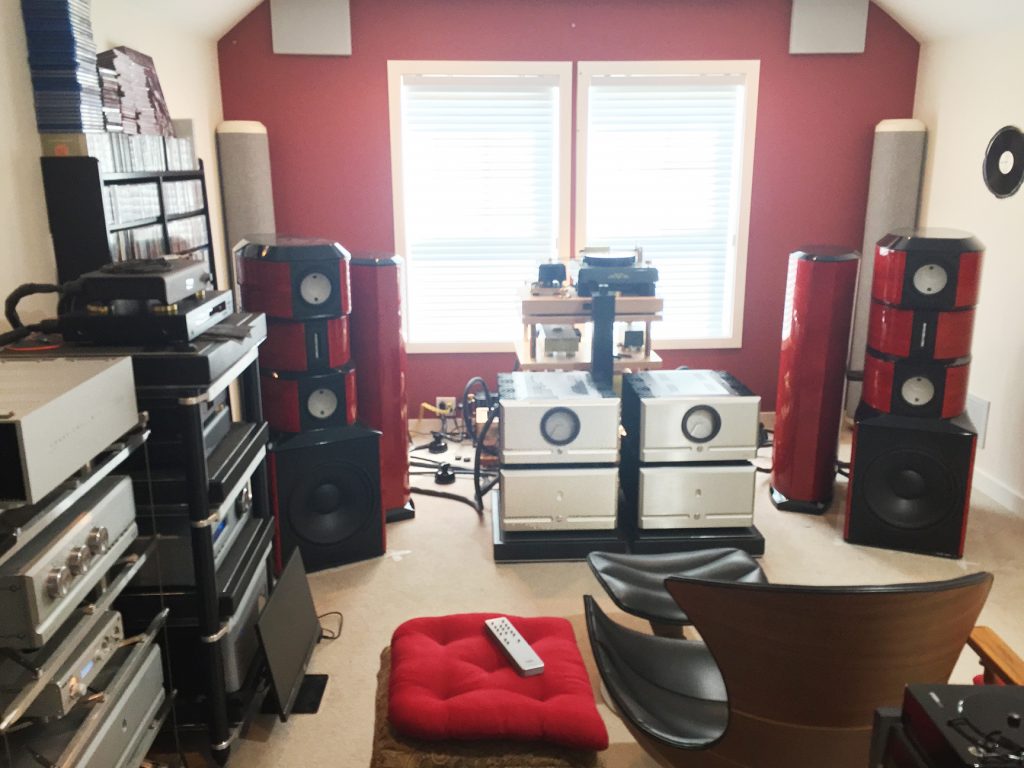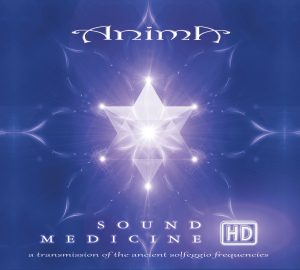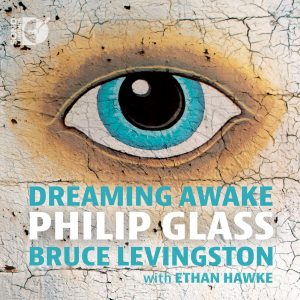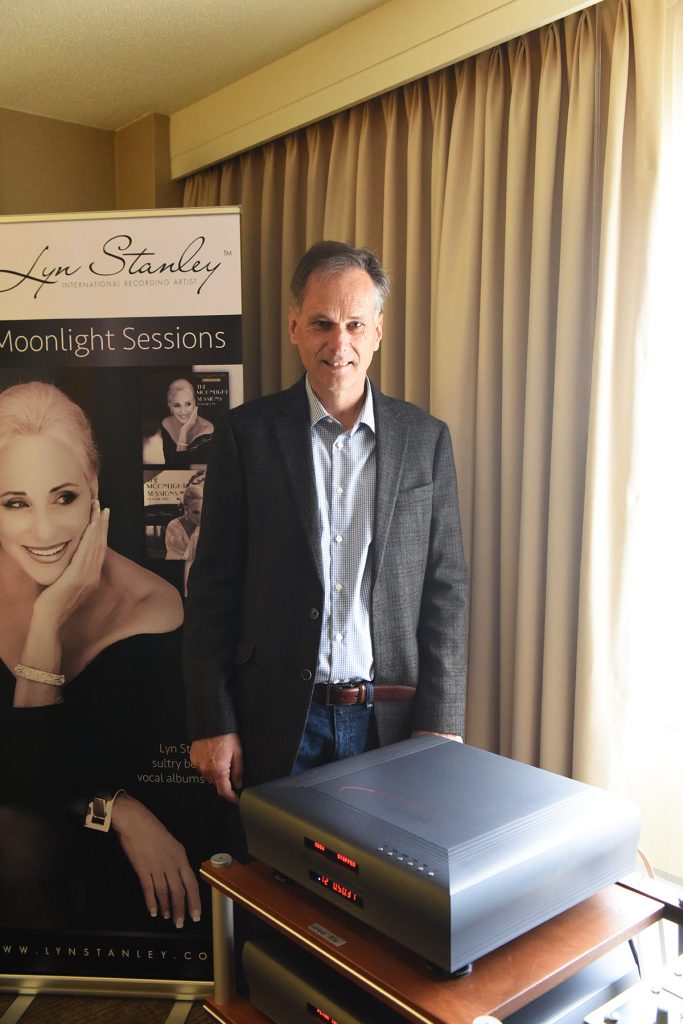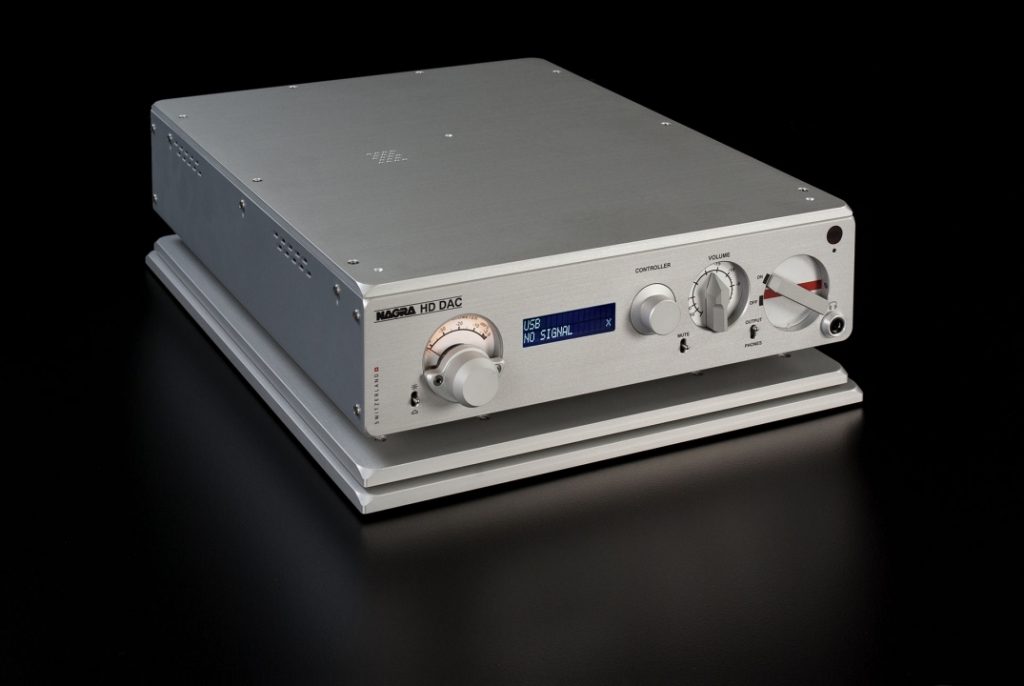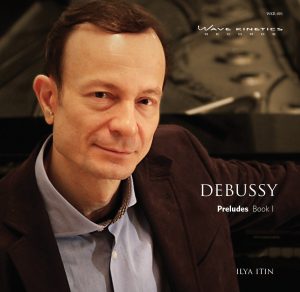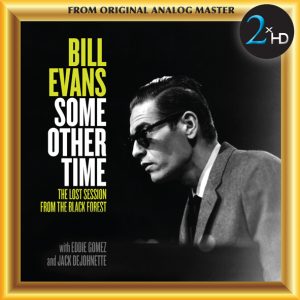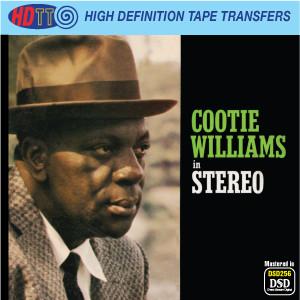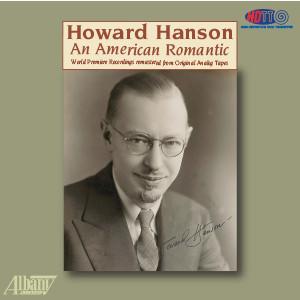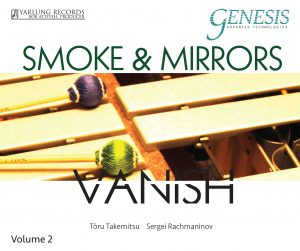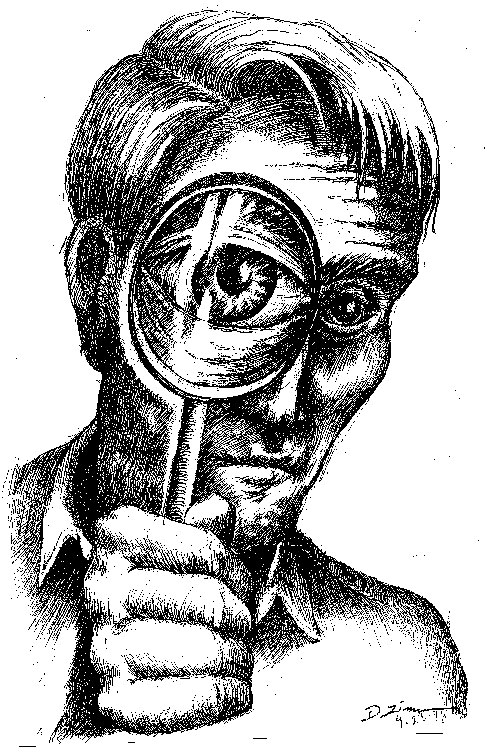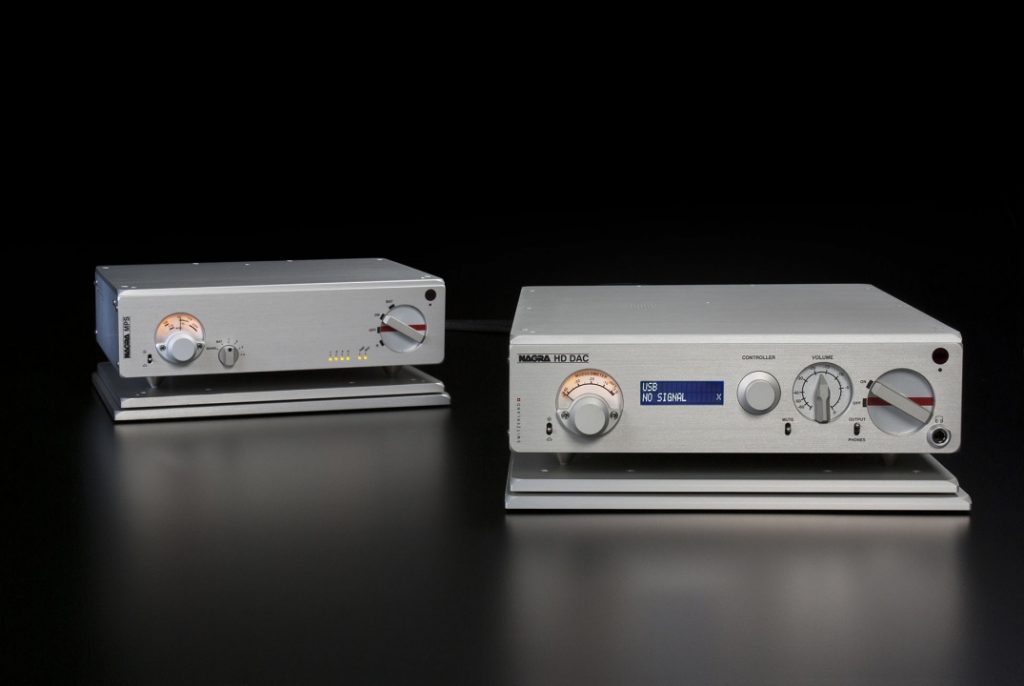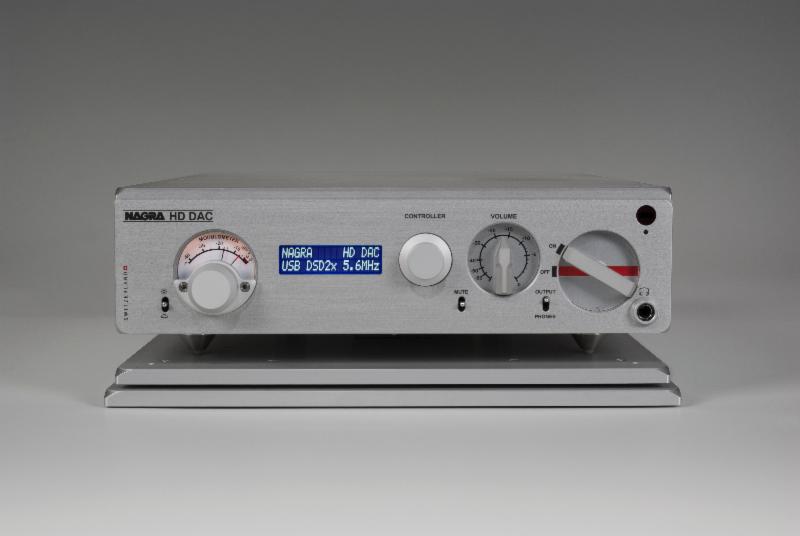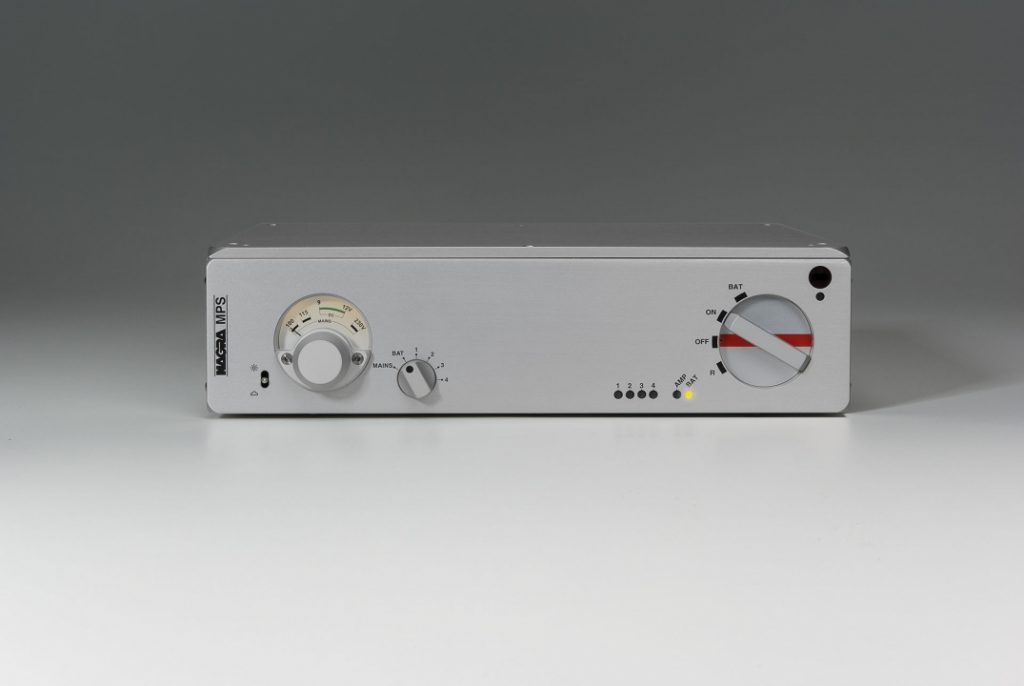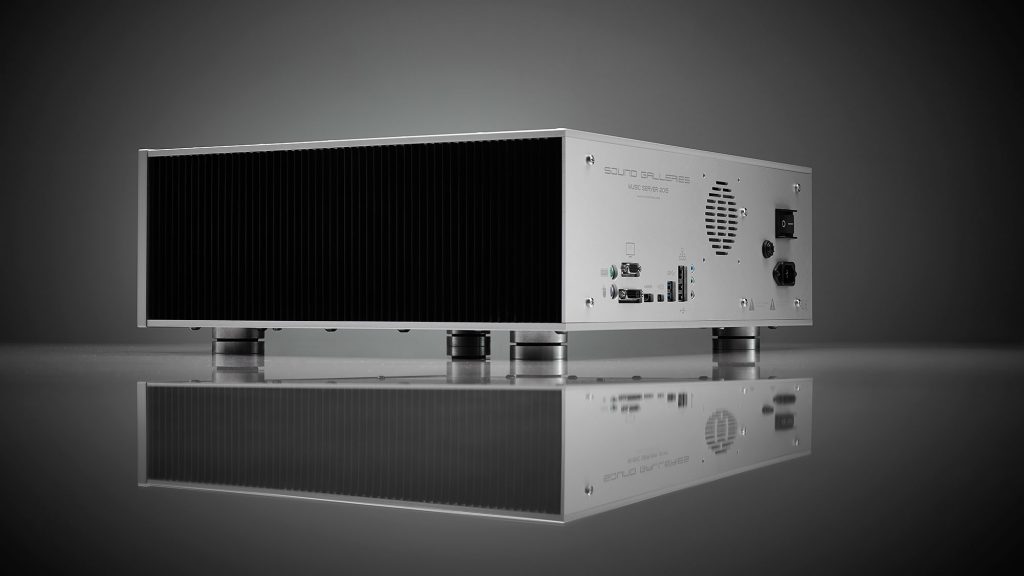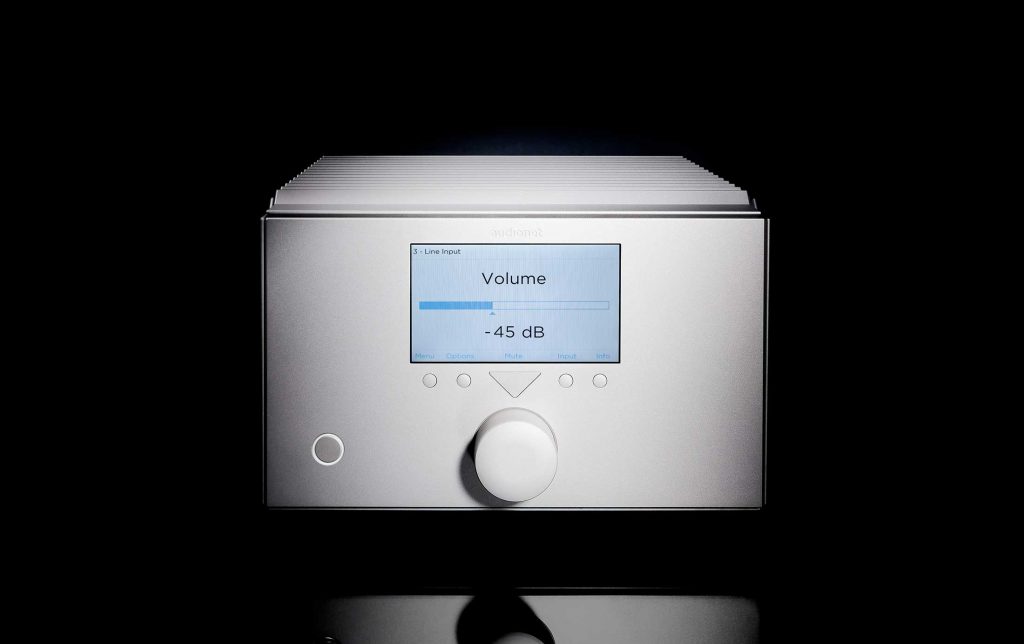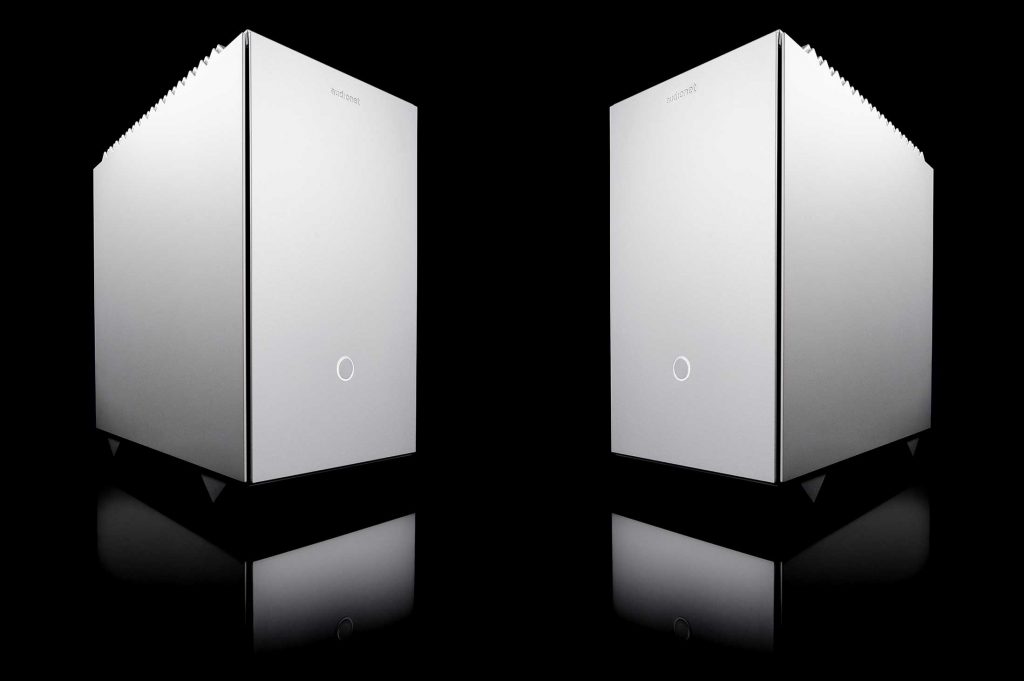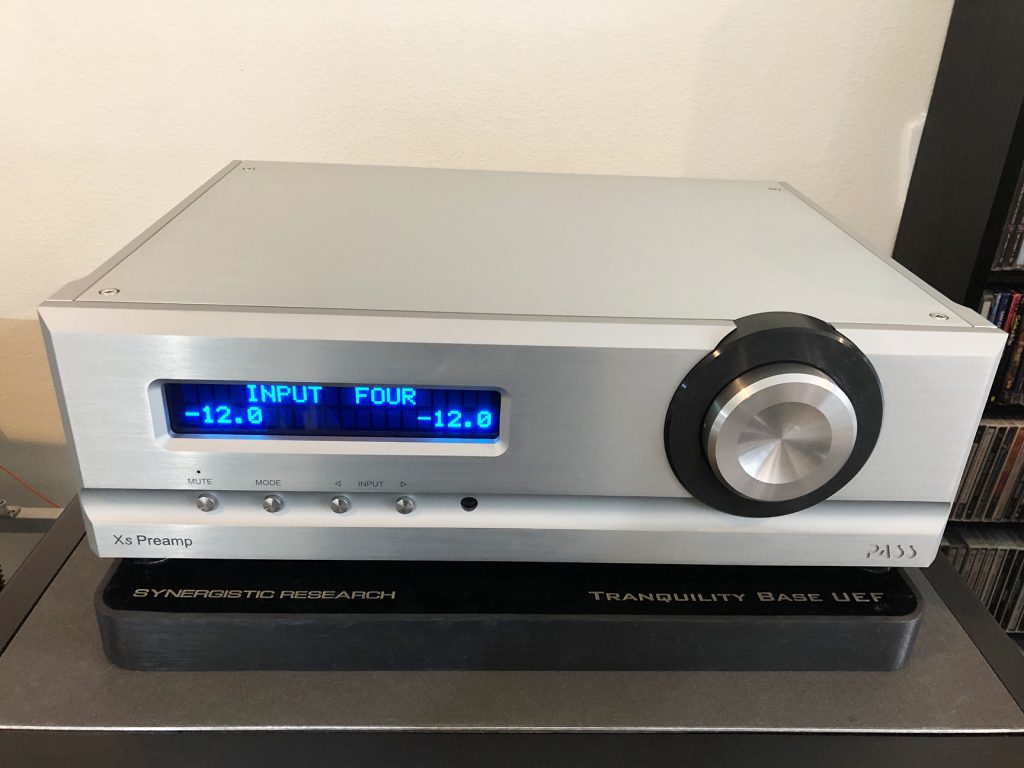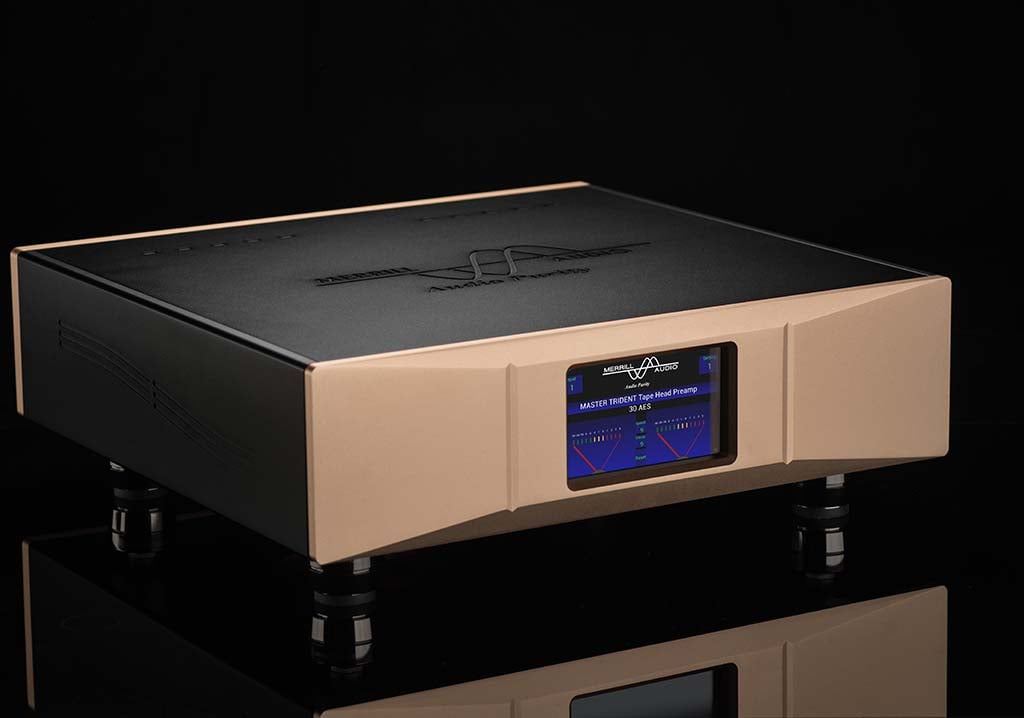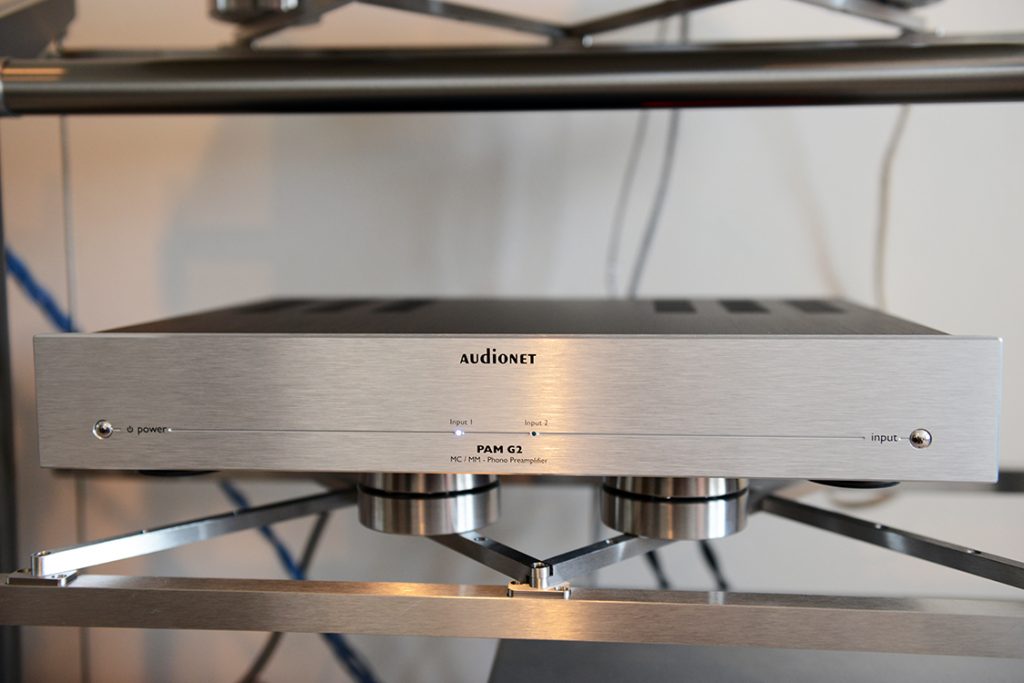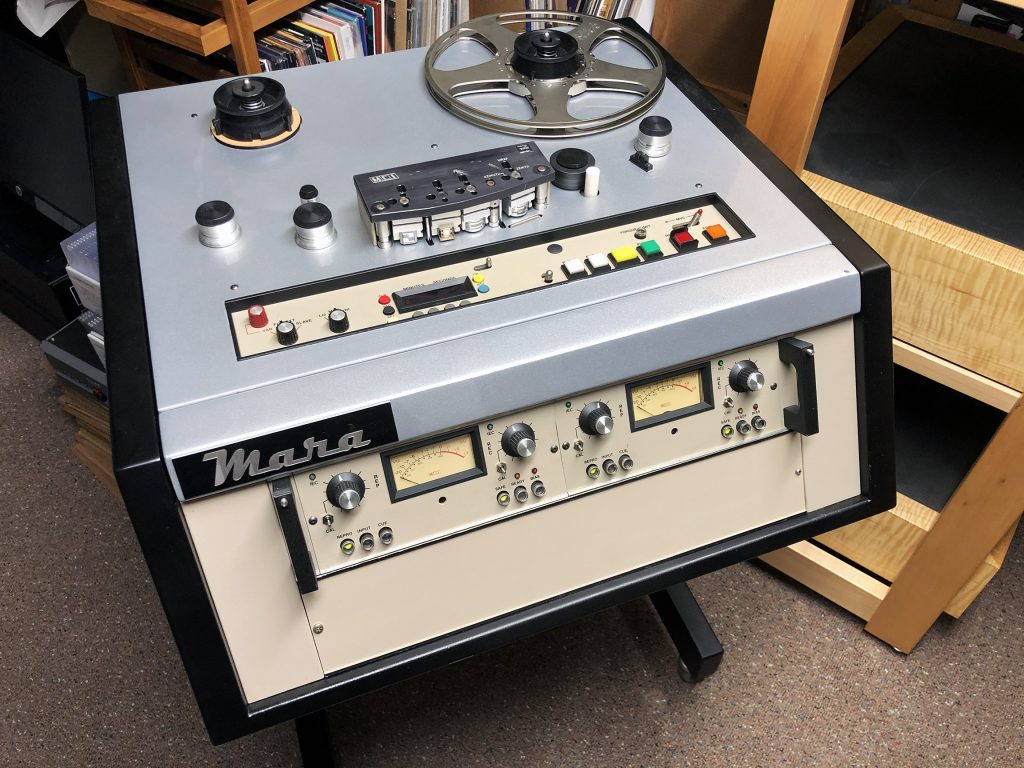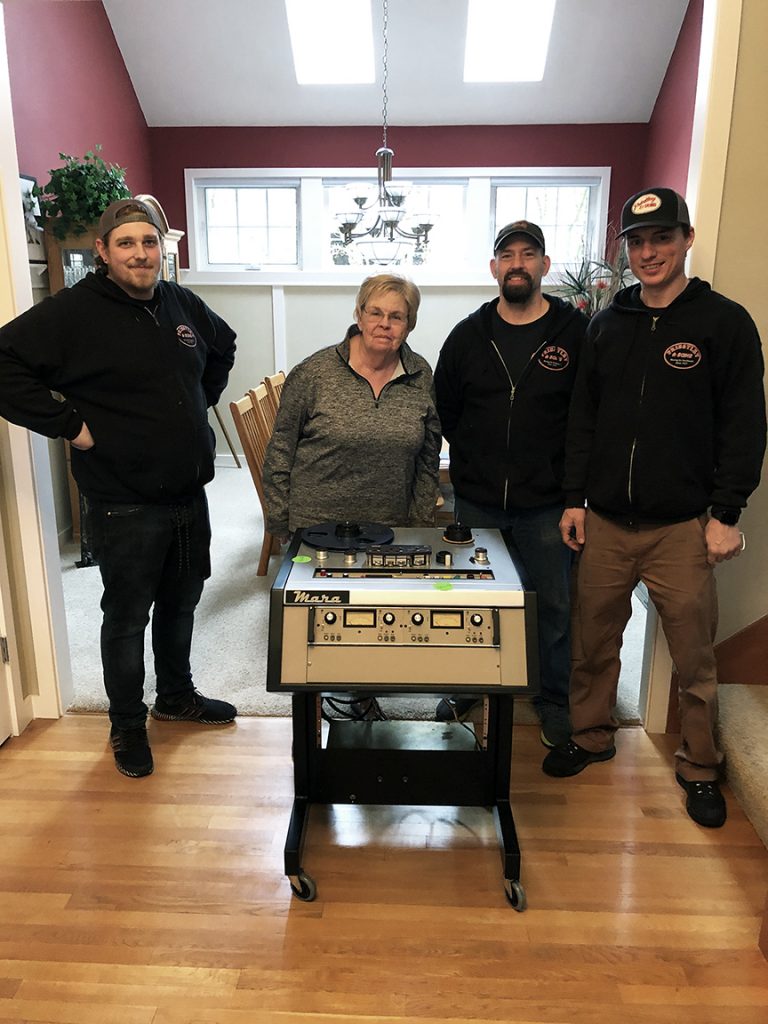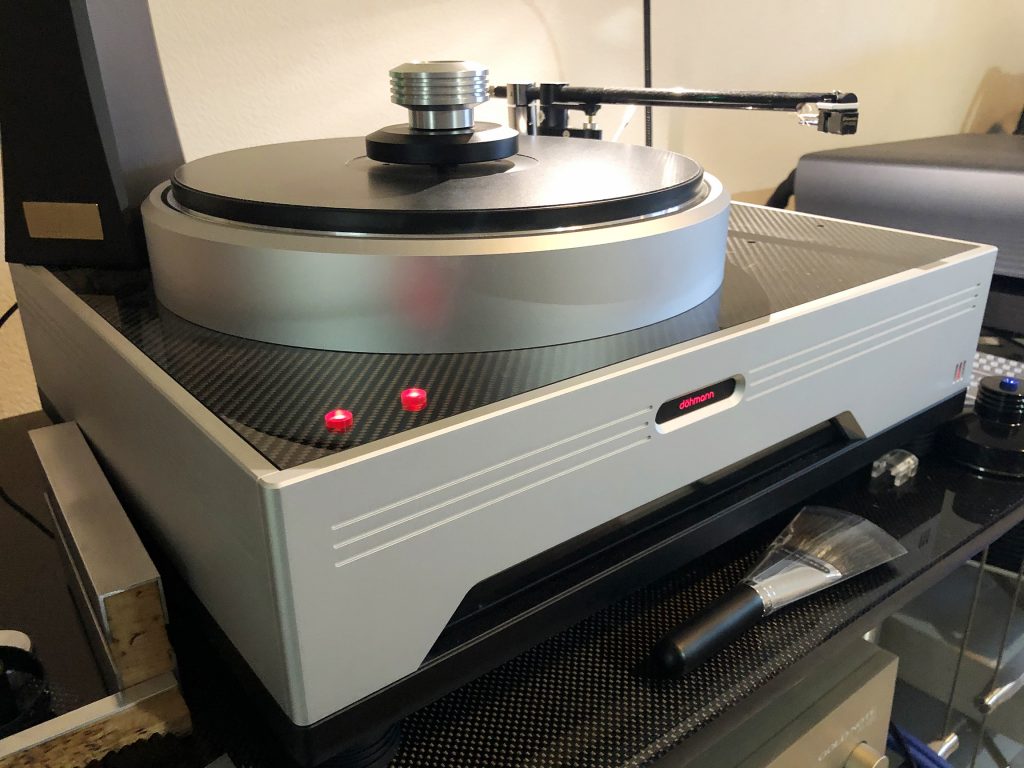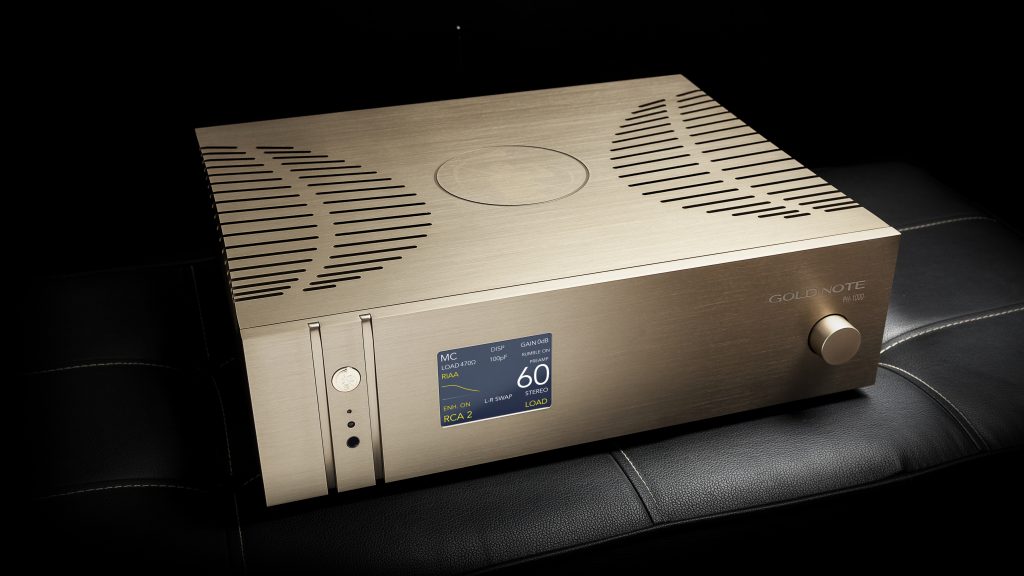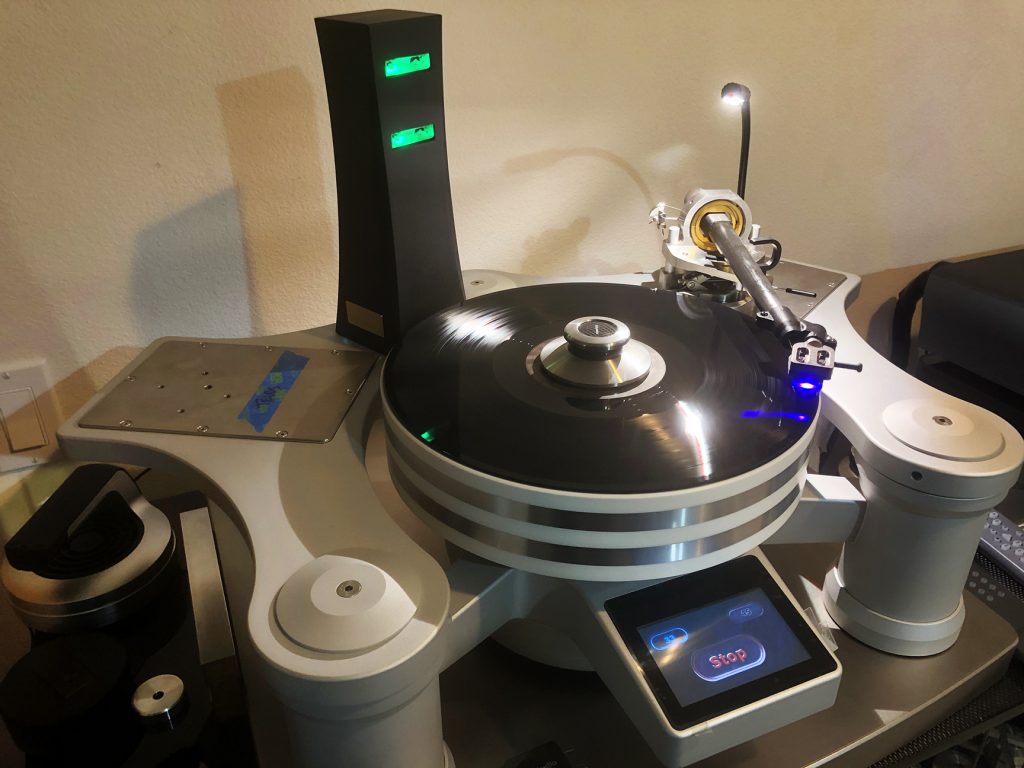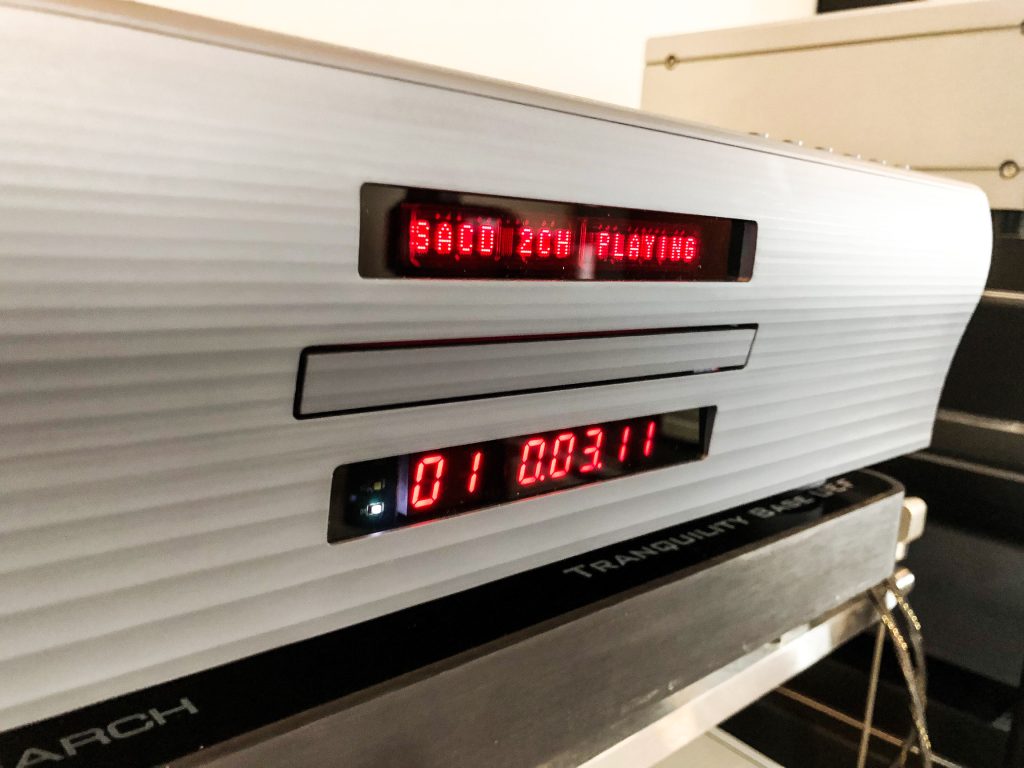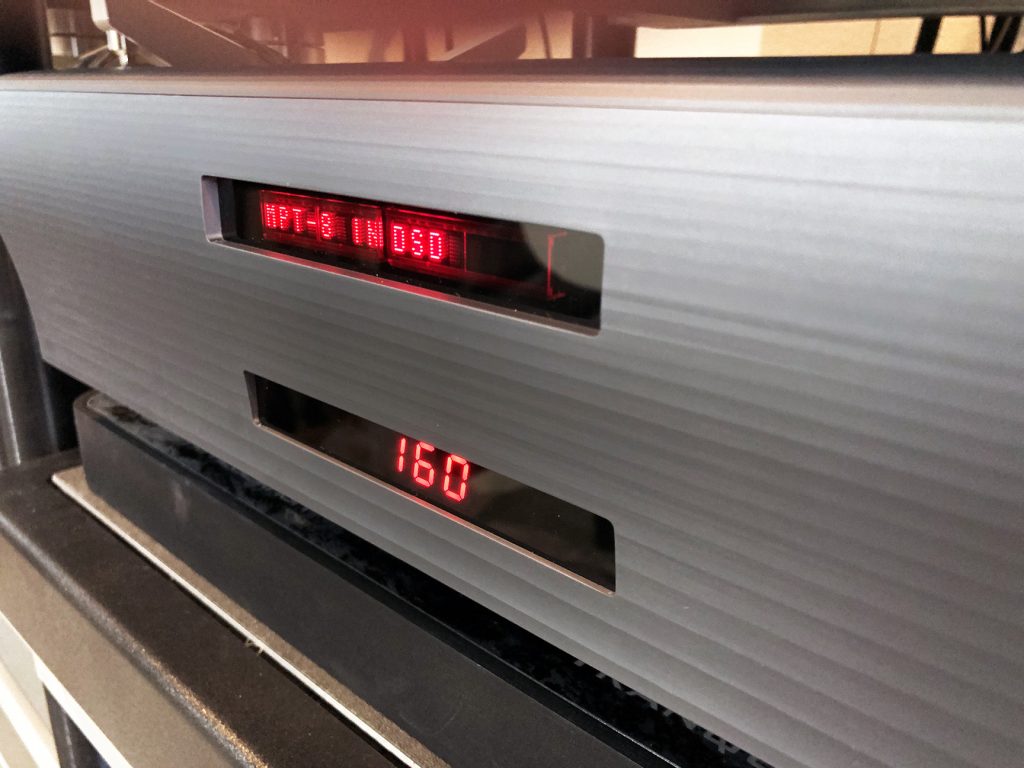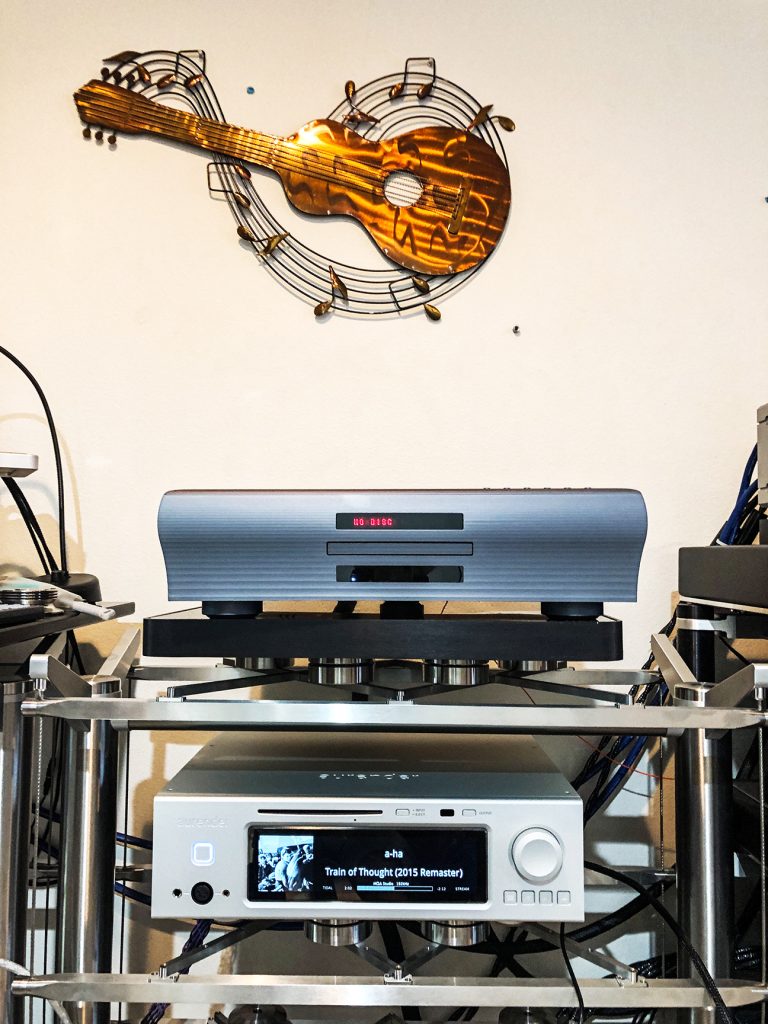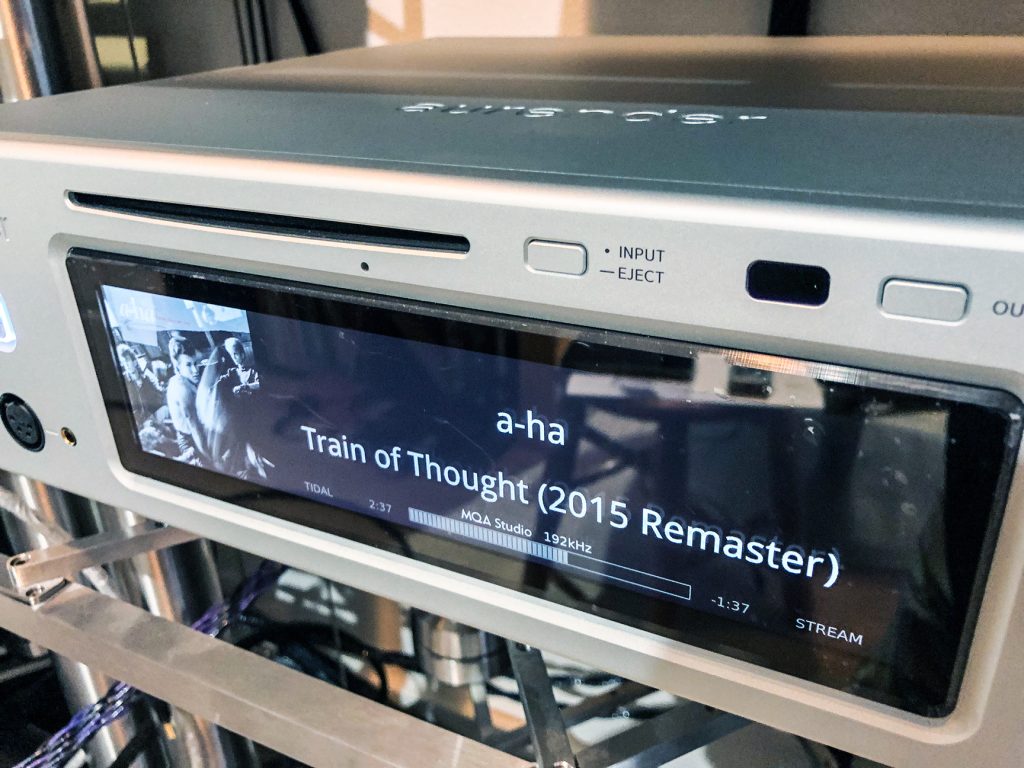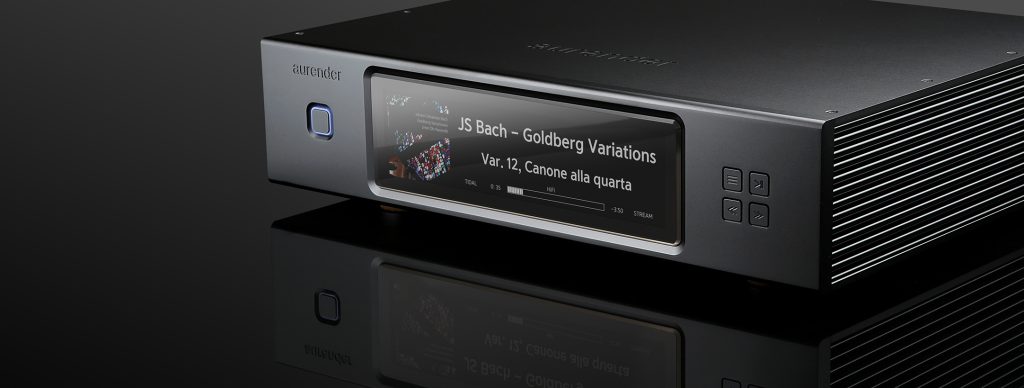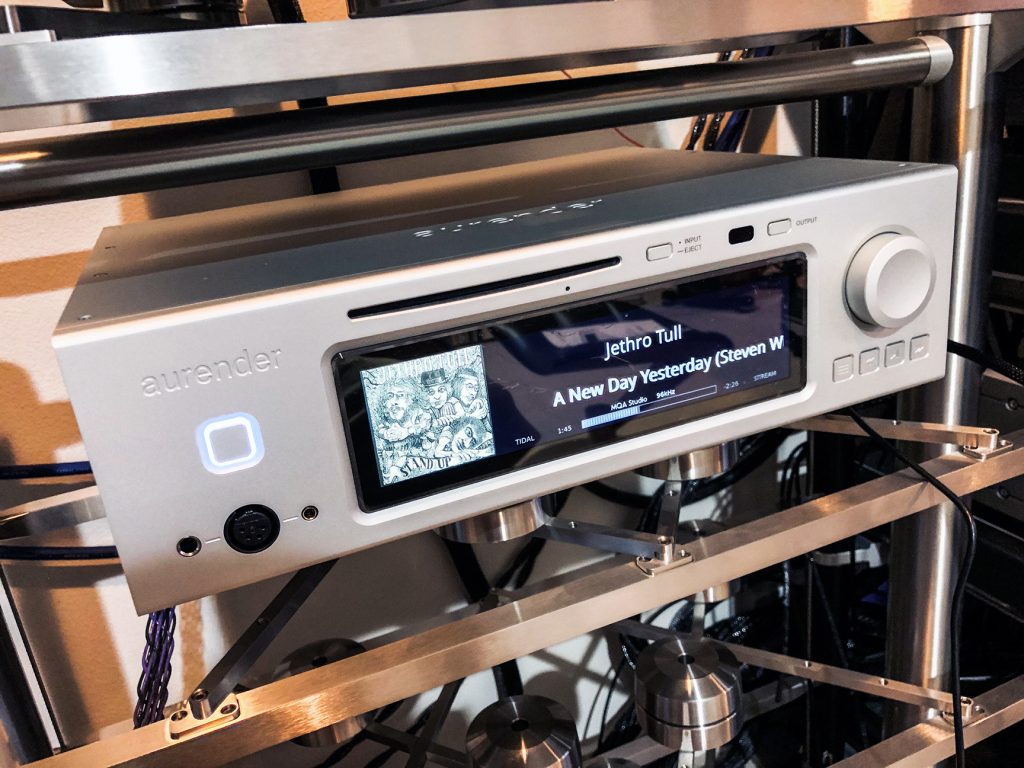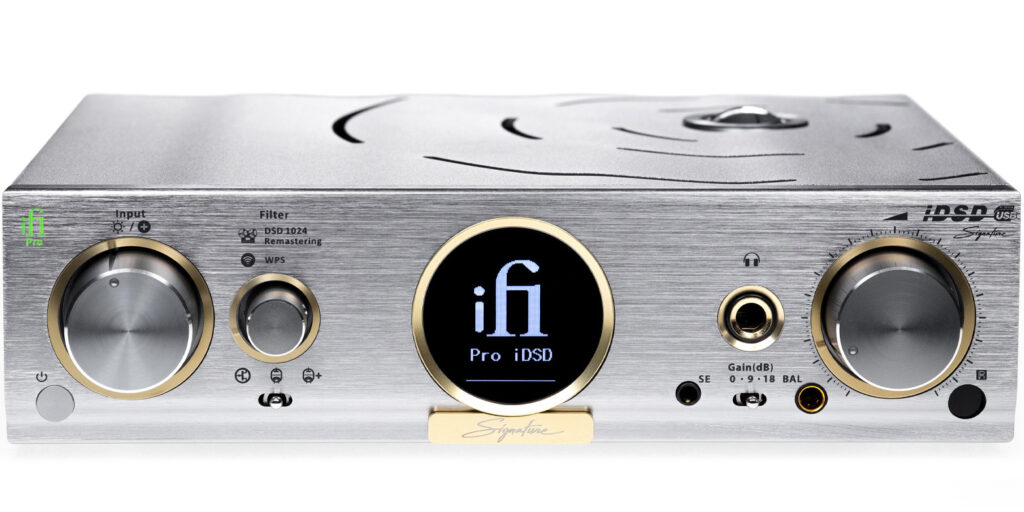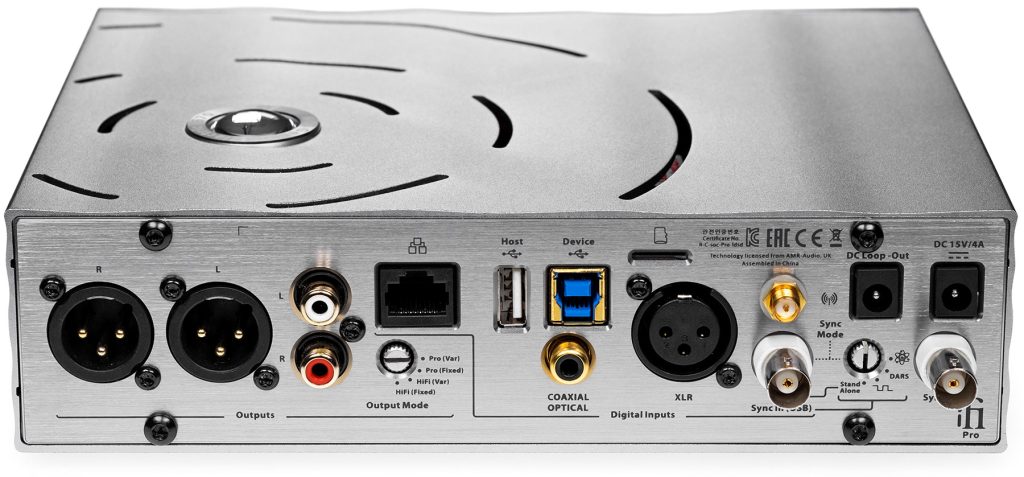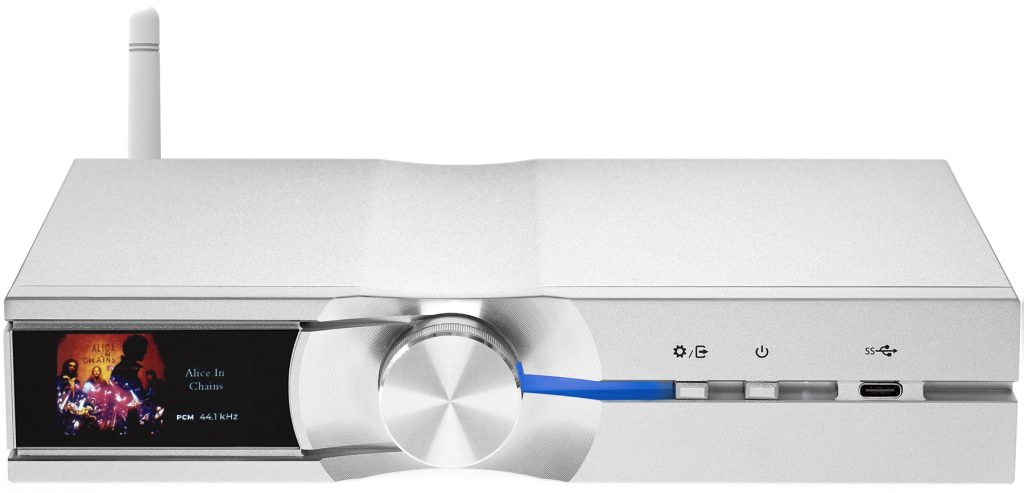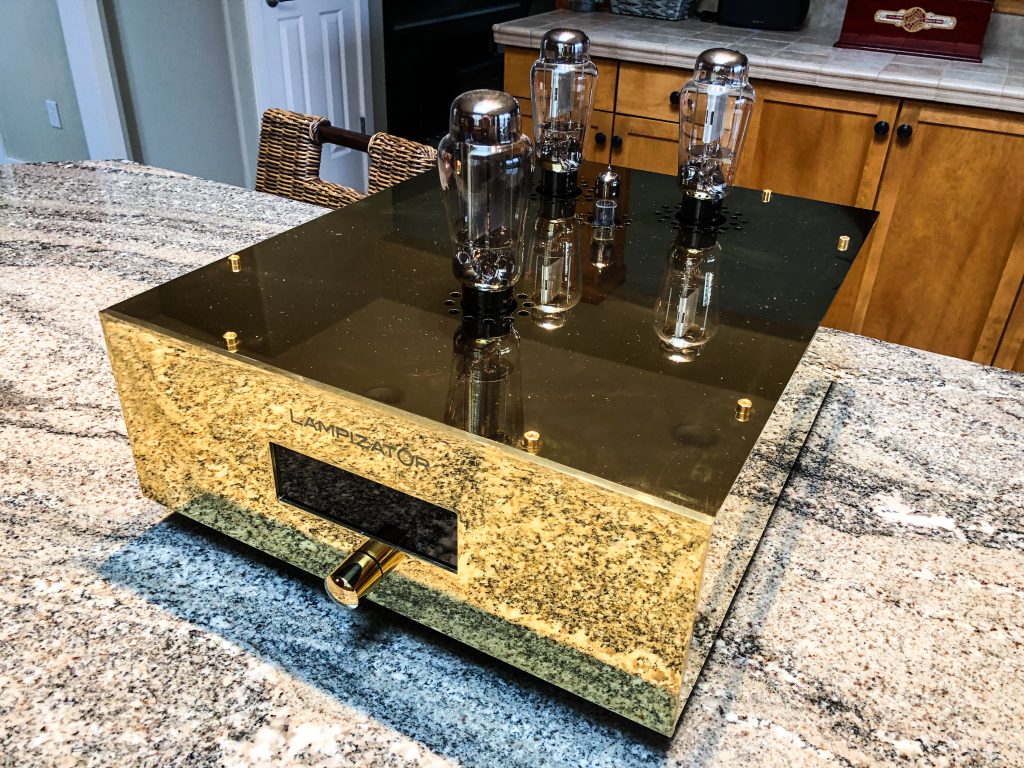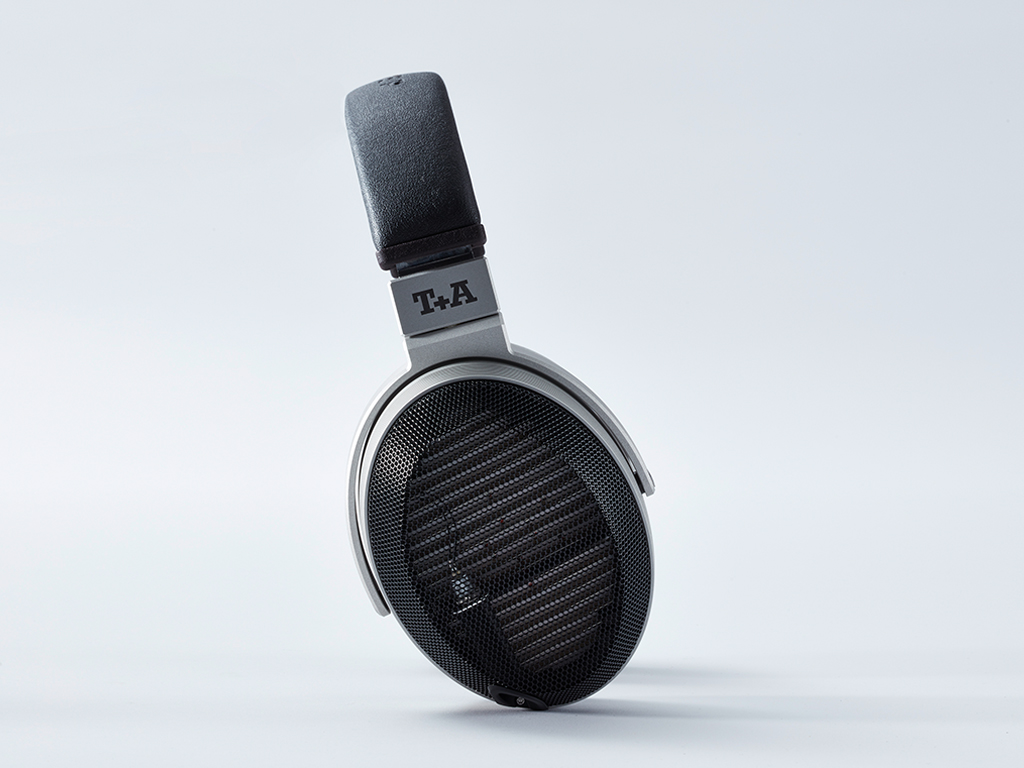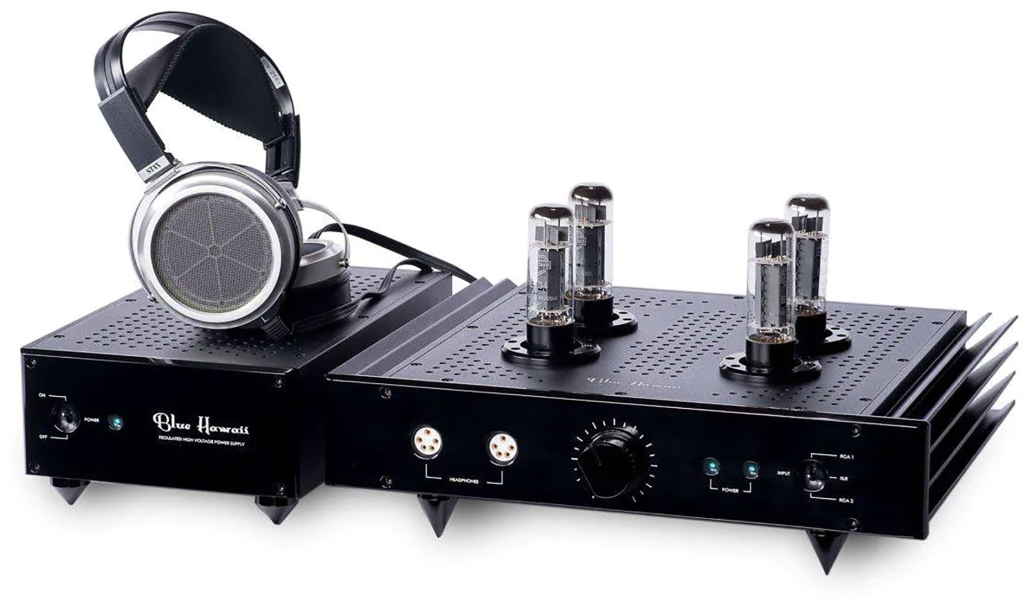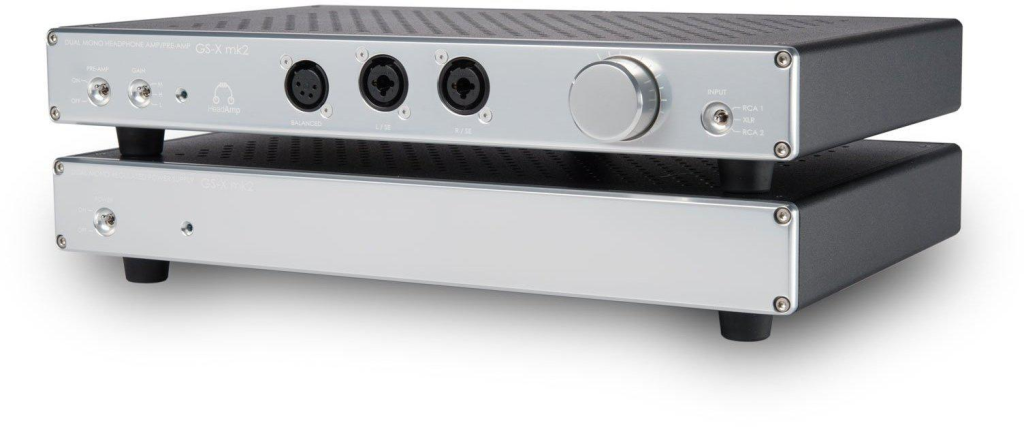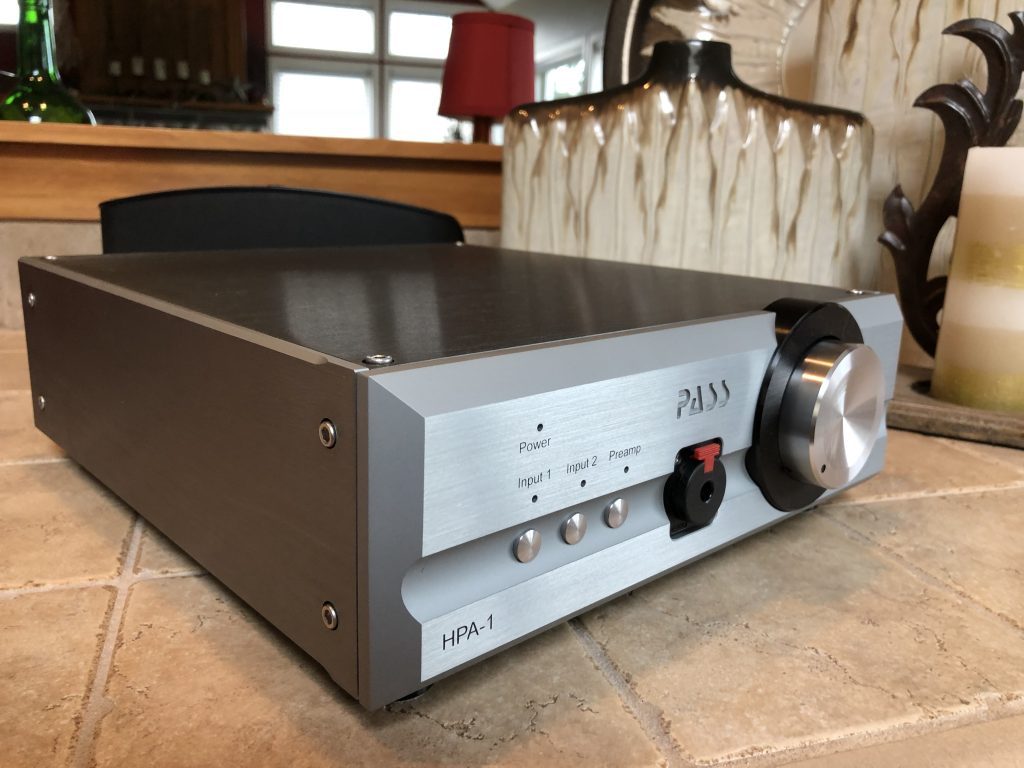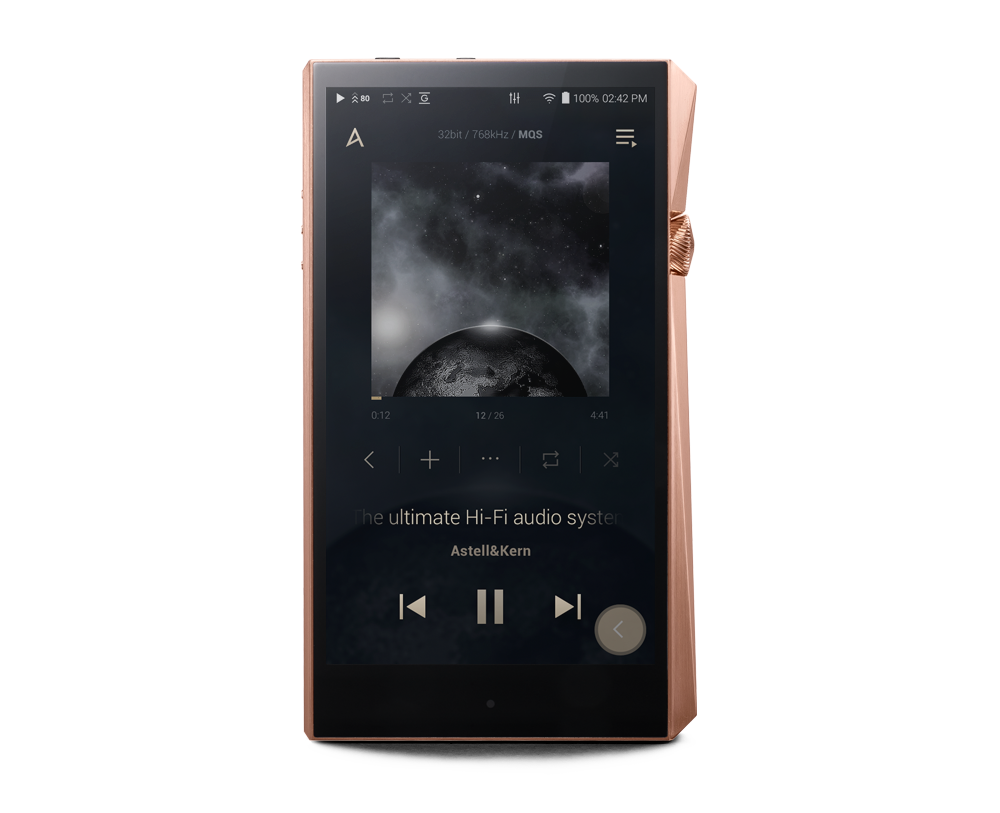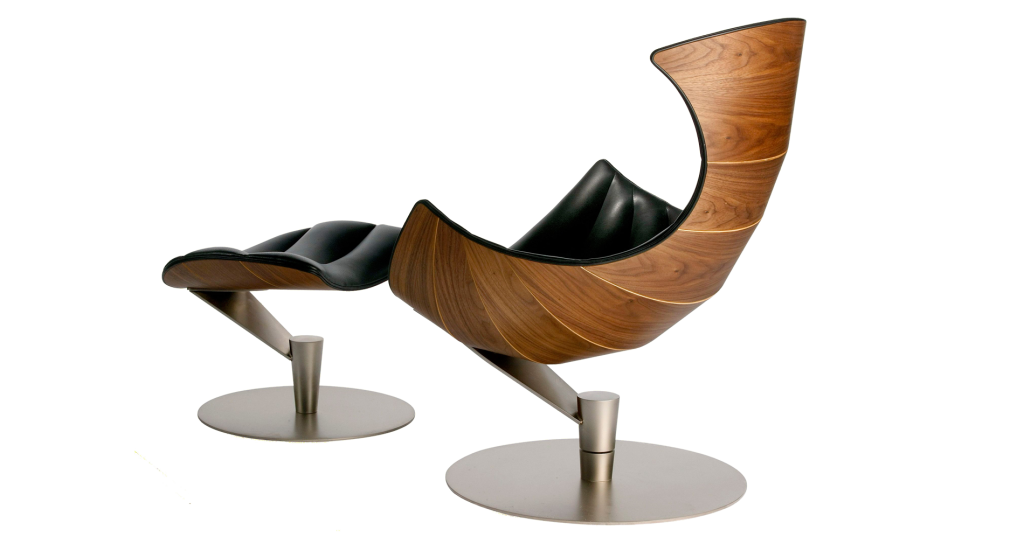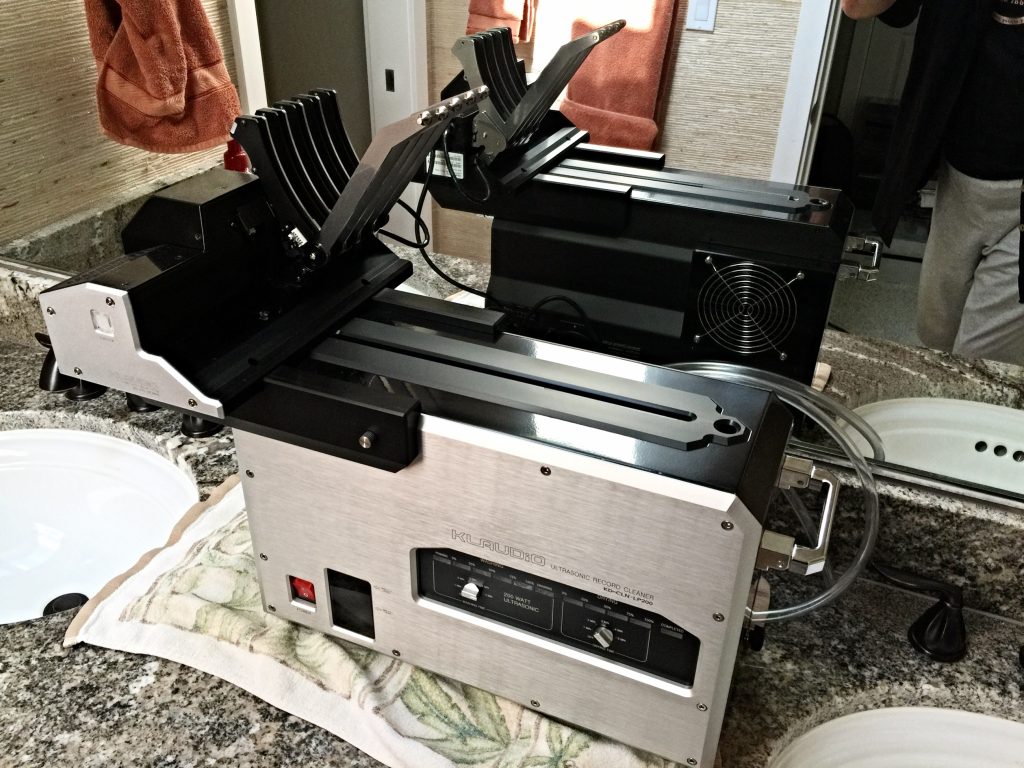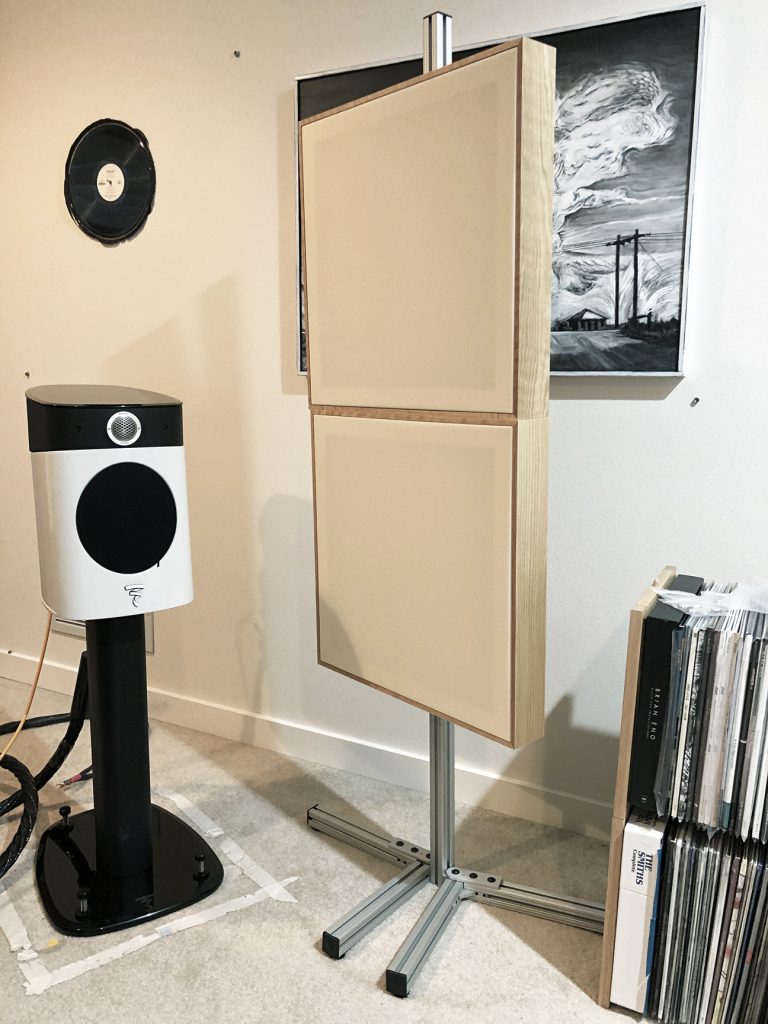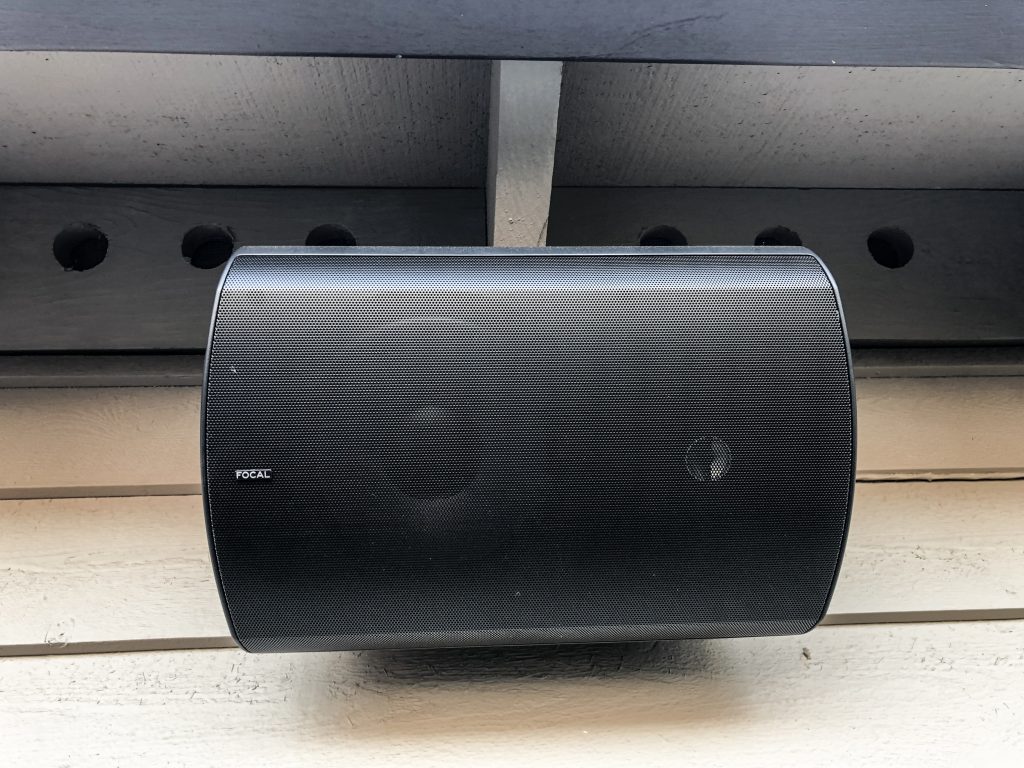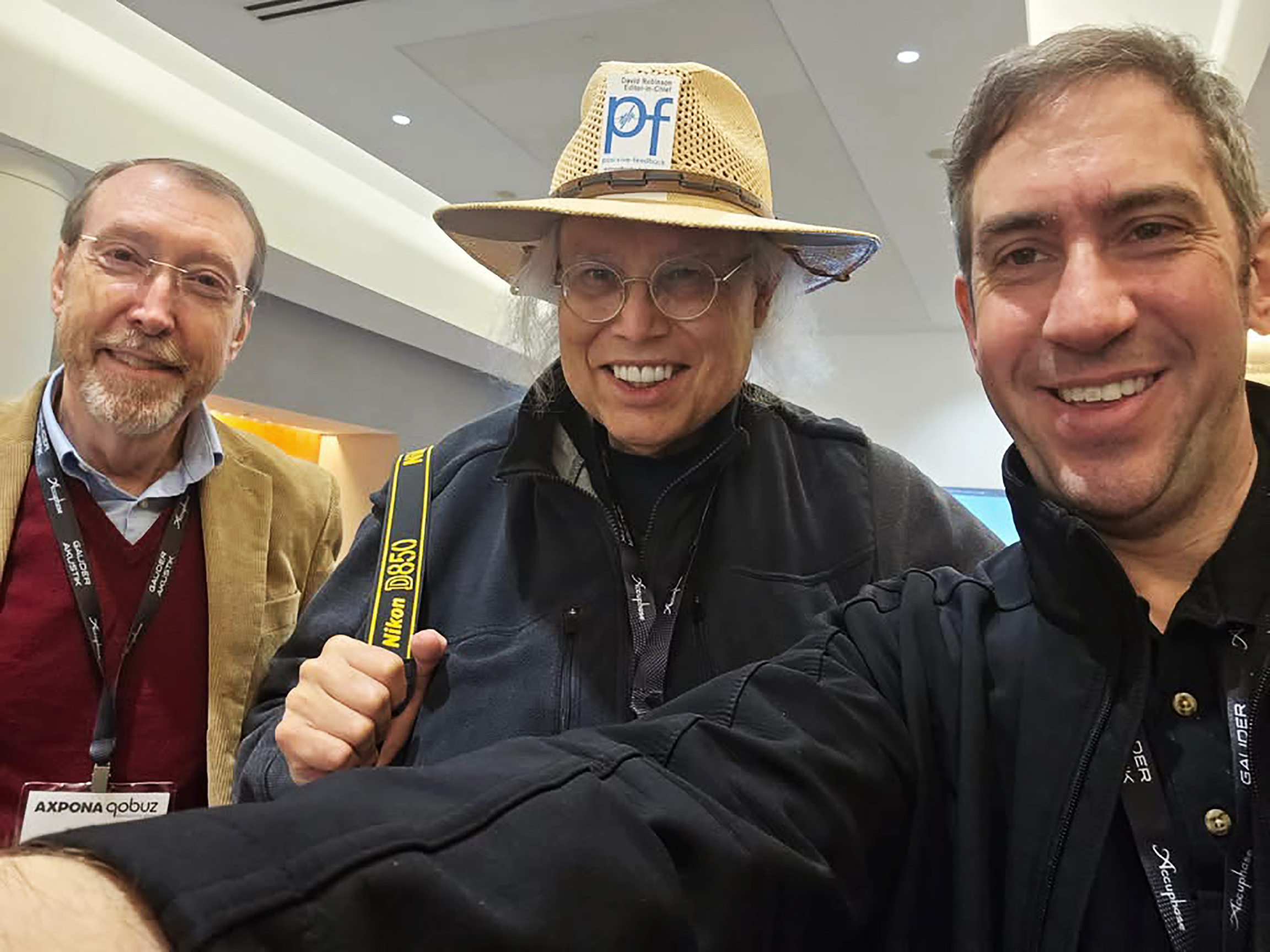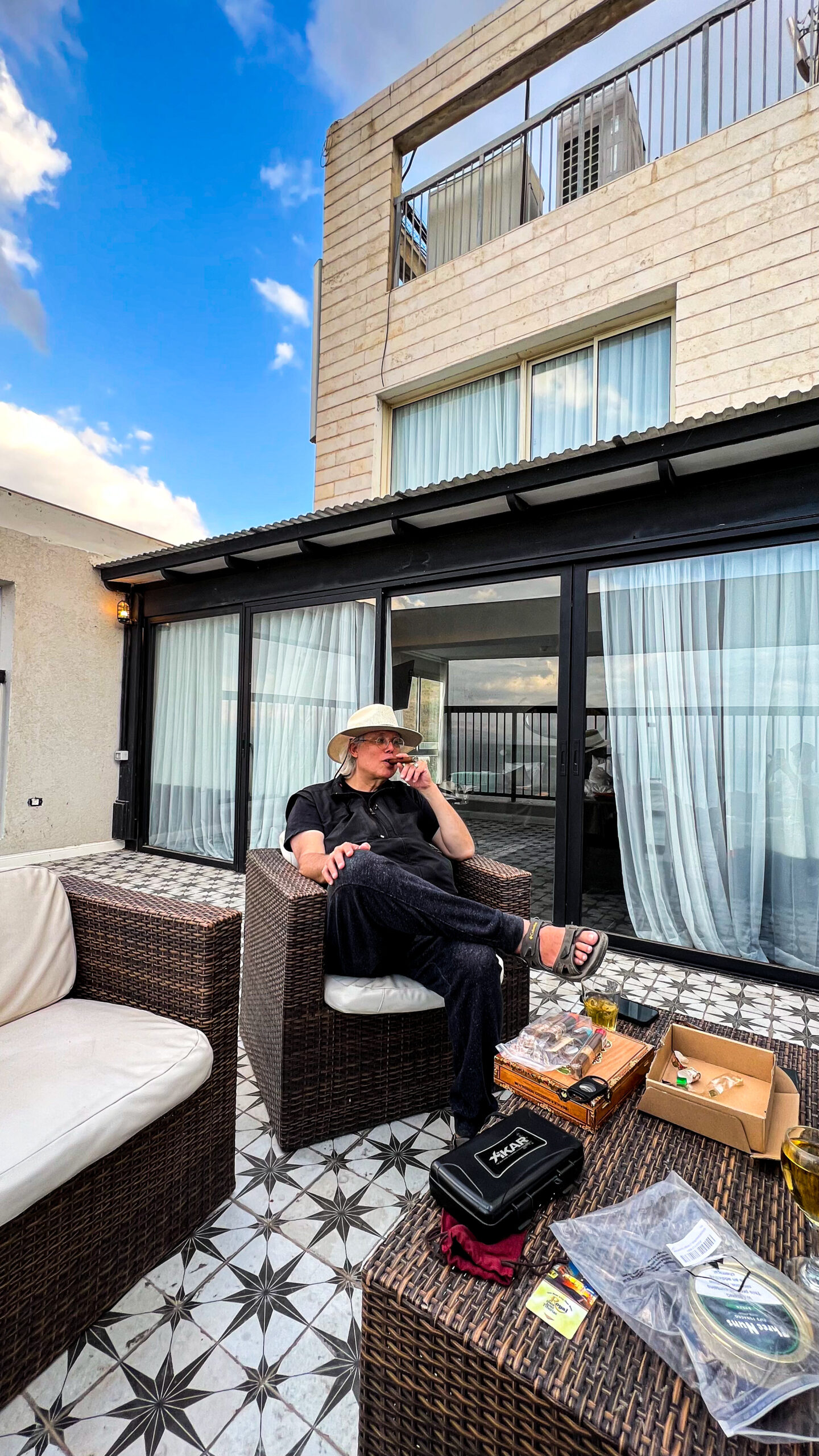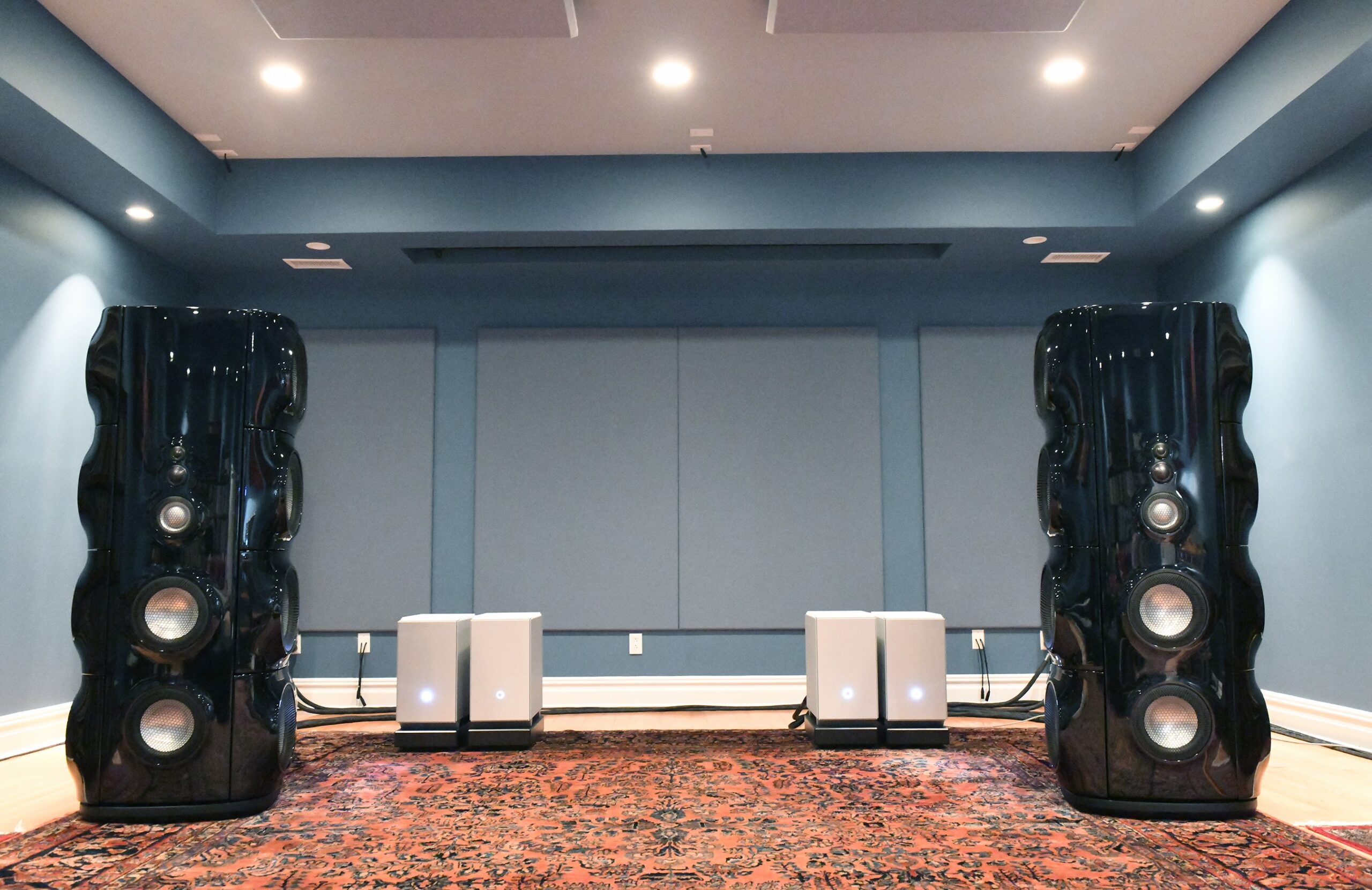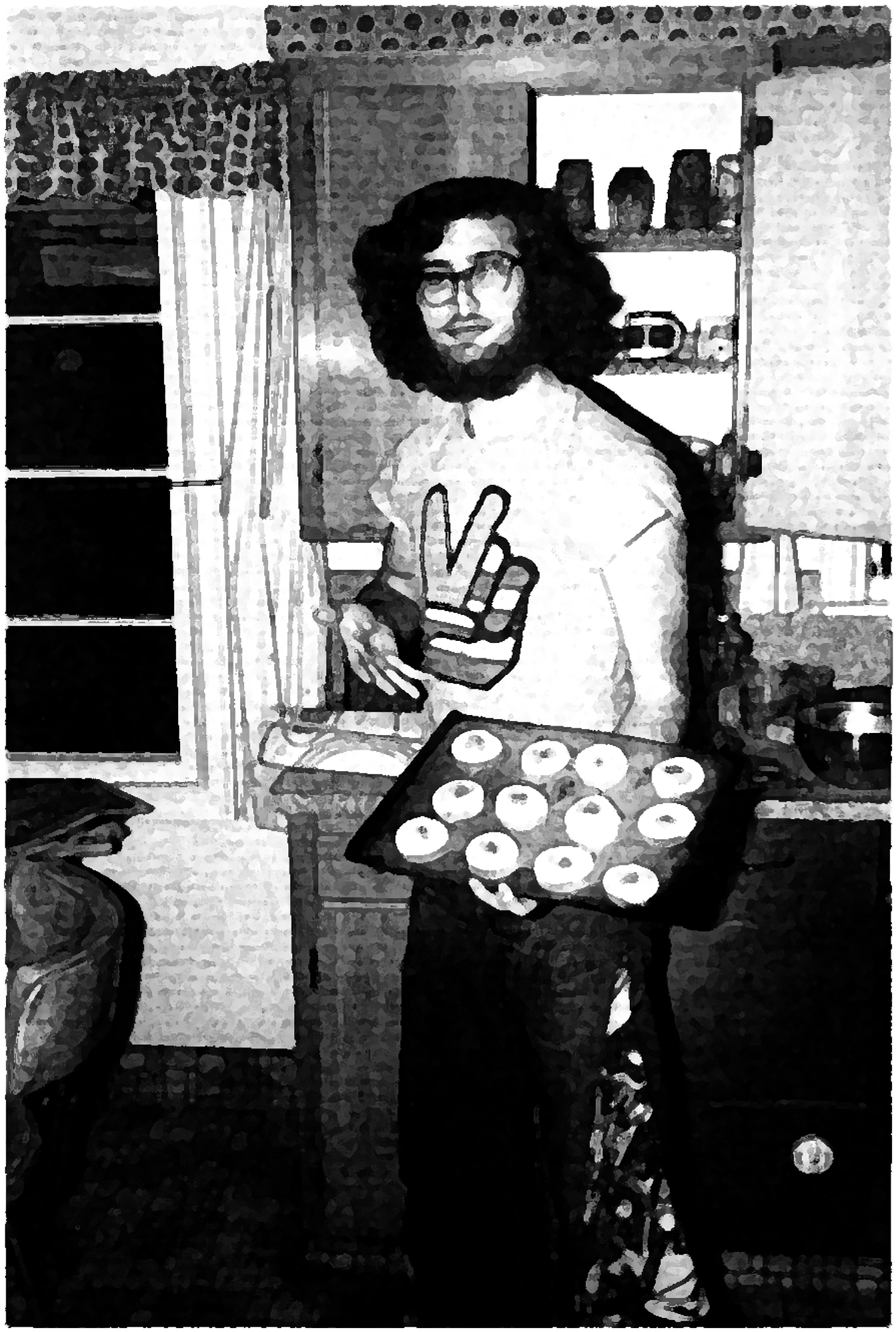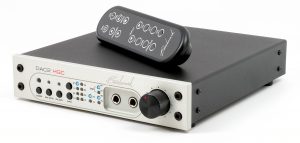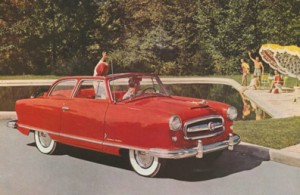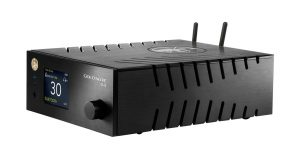Ye Olde Editor contemplating the mysteries of life and audio…
(Photograph by John Robinson)
Back in the winter of 2017 (HERE in Issue 94), I shared my evaluation of the Sound Galleries SGM2015 reference-level Music Server. Since a music server cannot be reviewed without also considering either an internal or downstream DAC, my comments had to be about the hybrid of the SGM2015 with the first DAC that we had in to go with it: The T+A DAC8 DSD. It was capable of 8x DSD (DSD512), and certainly did a great job. This was especially considering its price point in the US of only $4K.
René Laflamme of Nagra at AXPONA 2017: a portrait
I promised that I would follow up with my evaluation another tandem. This time around, I shifted the price tag very significantly…to just under $31,000. This was for the storied Nagra HD DAC, with its separate MPS (Multiple Power Supply), cables, and VFS L isolation stand (not supplied and not reviewed). Yes, that's a lot of money. But you can spend more, even a lot more, for a DAC these days, and it was Edward Hsu at Sound Galleries who strongly recommended that I try the Nagra HD DAC. René Laflamme of Nagra kindly made the arrangements to get the Nagra units my way, and so the Nagra was on hand when I finished my work with the T+A DAC8 DSD. Would it turn out that Edward was as right as he'd been with the T+A DAC8 DSD?
Edward Hsu and Mike Lavigne at Mike's listening room, after installing the SGM2015 (to the right of Hsu, on the top shelf; photographer unknown)
Before reading any further, I would recommend that readers click on the link above, and read my prior review. It covers many salient characteristics of the Sound Galleries; I won't be repeating that content in this review, since it would be redundant. Once you've done that, return to this article, which will focus most of its attention on the Nagra HD DAC in conjunction with the SGM2015.
Nagra Description and Specifications
The Nagra HD DAC and MPS on their VFS L isolation platforms
Nagra is, of course, a very well-known name in the world of audio, with a decades-long history in audio and video. (See HERE for a brief summary of its history at the Nagra Web site.) They are particularly renowned for their RTR tape machines; for more, see also HERE. The Nagra HD line was launched beginning in 1997, and has progressed impressively over the twenty years since then.
The Nagra is certainly a distinctive beastie! You can get it as a single unit, using only the internal power supplies and standard passive XLR outputs, but Edward Hsu recommended against that. Far preferable in such a high resolution connection as with the SGM2015 was to go with active transformers on the XLR output, and add the Nagra MPS (Multiple Power Supply). The MPS is able to handle up to four Nagra connections at once, and can even add a Lithium-Ion (Li-Ion) battery to the mix, for those who want DC in the mix. Note that the HD DAC requires two of those connections, one for the digital section, and one for the analog section.
Nagra designed the HD DAC to be a state-of-the-art, no-compromise design from the get-go at the time of its execution. Up to Double DSD, DXD, and PCM to 384kHz/24-bit are all on the menu. (The only thing that's missing is Quad DSD at 11.2mHz, and that's in the works for 2018.) No one who's familiar with Nagra would be surprised; their product line is built like world-class Swiss watches. Given the fact that their headquarters is in Switzerland, this follows, I reckon.
The DSD section was designed in cooperation with Andreas Koch of Playback Designs, a bona fide world-level guru of DSD, who confirmed to me that he was deeply involved in the work, and is also working with Nagra to bring out a hardware upgrade that will add Quad DSD (DSD256) to the mix. This is due to be released right after the Munich Show, so those of you who have been waiting can start to queue up to order yours in May. These are high-precision chipsets featuring algorithms that process the incoming DSD signal from the USB input, producing what Nagra claims is "…sound that has never reached such a true level of definition."
On the analog side, Nagra exercised its usual mastery in producing compact, precision-made audio jewelry with sublime purity. It enthuses over its accomplishments with justifiable pride.
"The analog section is also the object of a superlative approach. Thanks to the quality of the signals supplied from the digital conversion circuits, the traditional steep slope filters have been totally eliminated. The consequence of this is the preservation of transients and harmonics, thus the music presents an exceptionally natural sound. Some of the critical design elements include Ultra high performance drivers, hand-wound transformers, and a tube driven output stage."
One essential principle of digital design in which I've encountered general agreement among the experts, especially when it comes to the demands of DSD, is this: the quality of the digital processing must be equaled or exceeded by the quality of the power supplies, and the excellence of the analog output section.
It is clear that Nagra approached the design of their HD DAC and the associated MPS power supply with this guideline in mind. It is also evident that Nagra brings some world-class prowess to the task.
The Nagra Web site contains the essential specs for their HD DAC:
Electronics
- Internal processing: 5.6 MHz, 72 bits
- Compatible digital formats: PCM 24-bits up to 384 kHz, DXD, DSD x 2 (DSD128)
- Bandwidth: 5Hz to 40 kHz (+0 – 3dB)
- Noise level: -128 dBr (linear)
- Distortion: < 0.02% (at -20dBFS)
Connections
- Digital inputs: 2 x S/DIF, 2 AES/EBU, 1 Optical, 1 Audio USB (mode 2), 1 x I2S (Nagra format)
- Outputs: 1 stereo on RCA connectors, 1 stereo XLR (Symmetrical on transformers available as an option)
- Dimensions: 277mm x 350mm x 76mm (12.2" x 13.7" x 3")
- Weight: 11 pounds (with XLR transformer active outputs
And here's the scoop on the Nagra MPS:
- Compatibility: Nagra BPS, VPS, PL-L, MELODY, JAZZ, CDC, CDP, CDT, HD DAC
- Outputs: N° 1 with Lemo connector 12 VDC, 1A, as well as DC connector for the BPS. The optional Li-ion battery will feed this output. N° 2 to 4 with Lemo connectors 12 VDC, 1A
- Optional Li-ion battery operation time: CD range 11 hours, VPS, PL-L, JAZZ 7-8 hours, MELODY 50 hours, BPS 100 hours
- Home automation input and outputs: 3.5mm jack connectors, output switched by relay (max 1A).
- Mains supply: 100, 115 or 230 VAC, ±10%
- DC cables: Custom made shielded cable with high quality Lemo connectors, available in 0.75 or 1.25m lengths. Other lengths available on request. DC cable for the BPS, 1m.
- Dimensions: Approximately the same as the HD DAC
- Weight: 11 pounds
Setup
The Sound Galleries SGM2015 Music Server is on the top shelf of the Stillpoints ESS Rack #2 here. The Nagra HD DAC is on the second shelf down from that, underneath the PASS Labs Xs Phono Amp, and above the Merging Technologies NADAC MC-8 Quad DSD DAC. On the bottom shelf is the Nagra MPS external power supply. (Photograph and image processing by David W. Robinson)
The Nagra HD DAC is not like any other DSD DAC that I've had here at Chez Ye Olde. The two components are quite trim at just over 12 inches wide per unit, but they do have some heft to them (11 pounds for both the HD DAC and the MPS). I had to handle them carefully as I placed them onto our Stillpoints ESS Rack #2 on Ultra V Isolation Feet. There were two cables from the Nagra MPS power supply, one for the digital section, and one for the analog section. Connection was very simple; no hassles at all, since the digital and analog power inputs are clearly marked.
Rear view of the HD DAC
Rear view of the MPS multi-output external power supply
Once in place, we cabled the Sound Galleries SGM2015 to the USB input on the Nagra HD DAC, using Edward Hsu's recommended Sablon USB. I commented on this cable in my earlier review in Issue 94, saying:
"I had connected the SGM2015 to the T+A DAC8 DSD using a USB cable that Sound Galleries had recommend. It was from Sablon Audio, a company that I was not familiar with. Mark Coles of Sablon had sent along his best earlier model, which was superseded partway through this project with his new top-notch model, the Panatela Reserva Elite. In passing, I will say that this USB cable has certainly shown itself to be a very fine design, and has provided remarkably clear and musical performance throughout the months since early March that it has been in the signal chain. Note to all: The Sablon Panatela Reserva Elite USB cable is really good stuff. If you'd like to read more about Sablon Audio, read Bill Malcolm's Positive Feedback review in Issue 82 HERE, or Dave Clark's comments in that same issue, over THERE. My comments here about the Reserva version sum up Sablon Audio's latest iteration of their Panetela USB. As I said, very tasty."
To reconfigure the SGM2015 Music Server for the Nagra HD DAC, Edward Hsu remoted into the unit, and in just a little while had the proper configuration dialed in. Once all was confirmed as operational, I could settle in for some extended listening.
The Roon interface in action on the SGM2015 Music Server (screenshot by David W. Robinson)
As before with the SGM2015/T+A DAC8 DSD, the interface that I used with the Music Server was Roon, overlaying the underlying HQPlayer music playback software. (Roon also handled the connection to our Tidal Music HiFi account with its PCM 44.1kHz .FLAC source files.) Roon made the handling of source files, either locally on the SGM2015's 1 TB solid-state drive (SSD), which I used for all DSD albums, or online Tidal music sources, relatively straightforward.
On to the sound…
The Sound
From the start, when Edward Hsu had recommended that I try the Nagra HD DAC, I had one critical question. The HD DAC tops out at Double DSD (DSD128); why would I want to try a unit that would not be able to output all of my Quad DSD albums without taking them down to Double DSD? Also, wouldn't the shift from the prior configuration of 8x DSD (DSD512) output of the SGM2015 to the matching 8x DSD output of the T+A DAC8 DSD to the SGM2015/Nagra HD DAC be noticeable, when everything would drop down to Double DSD? Yes, the T+A was $4K, while the Nagra HD DAC with MPS was nearly $31K, but still…
Edward assured me that I would be quite amazed. I suspended disbelief…somewhat grudgingly…but I did it. It would certainly be a test of the design principle that I mentioned above. Would a superior analog section and power supply trump a lesser sampling rate?
I was going to find out.
Our reference stereo listening room during the SGM2015/Nagra HD DAC tenure: PASS Labs Xs electronics; Evolution Acoustics MM2 Loudspeakers with EXACT external crossovers; Synergistic Research power distribution, major cabling, active grounding, HFT's, and Atmosphere XL4; Stillpoints ESS Rack; Critical Mass Systems QXK Racks and sonic filtering platforms; acoustic treatments by ASC and Cathedral; GamuT Lobster Audiophile Listening Chair. (Photograph and image processing by David W. Robinson)
Note that by the time that the Nagra HD DAC and MPS were installed, our reference system had changed. The BAT electronics from my first review had returned to BAT, and were now replaced with the exceptional PASS Labs Xs reference electronics: The Xs Phono Amp, Xs Preamp, and Xs 150 pure Class A Monoblocks. The GamuT Zodiacs took a break while the Evolution Acoustics MM2 Loudspeakers, with their EXACT External Crossovers, handled the output. I had also put the GamuT Lobster Reference Audiophile Listening Chair into place…perfection for the serious music lover!
To say that this system was an extremely revealing, high-resolution combination that did so without any loss of musicality, would be to commit a grave accuracy. If there was a noticeable diminution in the performance with DSD sources, I would surely hear it. With PCM sources like 44.1kHz .FLAC files from our Tidal HiFi streaming subscription, the difference would be in the conversion of PCM to DSD, upsampled to 8x DSD (DSD512) via HQPlayer, and output to the T+A DAC8 DSD DAC at that same 8x DSD rate, vs. the same process, only this time downsampled from 8x DSD to Double DSD (DSD128) on the final output to the Nagra HD DAC.
As I mentioned earlier in my first SGM2015 review cited above, we have a very large library of DSD recordings, ranging from Single to Double to Quad DSD. To listen to these, I used Windows 10 File Explorer to simply copy them to the 1 TB solid-state drive on the SGM2015. While this isn't the largest hard disk space to work with, a terabyte is certainly enough to use as scratch space, with albums being moved on and off easily, at need.
As before, with the Nagra, I proceeded with Single DSD albums, many ripped from SACD sources via Korg or Sonoma A/Ds. Others are available at sources like Acoustic Sounds Superhirez, NativeDSD.com, HDTT, and Blue Coast Records. These ranged from classical to jazz to rock to folk to alternative titles from the likes of everyone from Billie Holiday and Vangelis to Poco. (In fact, I used many of the same titles mentioned in part 1 of my SGM2015 review, with the T+A).
Then I progressed to the Double DSD albums, which included some recordings available online, some needle-drops courtesy of the Korg A/D, some tape transfers that I had done to Double DSD via the Merging Technologies Horus A/D, and some unobtainium albums from industry friends. (Don't ask.)
So far, all went well…the processing to an output of Double DSD represented no loss.
Philip Glass, Dreaming Awake, in Double DSD (DSD128) on the Sono Luminus label at NativeDSD.com. Haunting!
Finally, and with some skepticism, I went to Quad DSD, a mix of commercially available and unobtainium recordings, which were processed by the SGM2015, and then dropped down to Double DSD for the Nagra HD DAC.
Andreas Koch, DSD guru extraordinaire, at AXPONA 2017: a portrait
Quick digression: Andreas Koch, the consultant designer on the DSD section of the Nagra HD DAC, has told me more than once that he thinks that the sweet spot for DSD, the best point for optimum tradeoffs in DSD performance, is Double DSD. Below that level, and you hear some limitations in Single DSD; above that level at Quad DSD, and hardware components are being driven hard. Unless you have the expertise to do Quad DSD right, and have invested to address its challenges, then the sonic gains may not be as large as you might like to believe.
And I have to admit it: Despite my show-me attitude, the Nagra HD DAC convinced me. Even with everything dropped down to Double DSD for the sake of its Double DSD ceiling, the HD DAC didn't make me feel like I was being deprived by dropping from 8x DSD. Nor did my Quad DSD recordings sound as limited as I expected. Not at all.
The Nagra HD DAC on its VFS L isolation platform
On the contrary, the HD DAC provided extraordinary sound. In fact, the performance of the Nagra made me forget that I was not hearing Quad DSD at 8x or Quad levels. Frankly, that was pretty surprising to me. Furthermore, the Tidal HiFi 44.1kHz .FLAC streaming media playback was likewise sounding exceptional, given all the usual limitations of the format. No, that does not mean that it sounded like clean-and-clear native DSD…but converted to DSD and played back at Double DSD via the Nagra, it was sounding damned good.
Week after week, I listened for many hours to the SGM2015/Nagra HD DAC combination. During that time, the conviction grew more and more firm: the Nagra was killing it! Double DSD was sounding primo, even with supreme native Quad DSD source recordings from the likes of Wave Kinetics Records or Blue Coast Records…
…or great transfers from master tape to Quad DSD from companies like NativeDSD.com (e.g., 2xHD)…
…HDTT…
…and Yarlung Records (via NativeDSD.com).
I was, in a word: gratified!
Surprised, but gratified.
No aspect of fine audio sound reproduction was stinted. The potent combination of components in our reference stereo room, detailed above, would have been merciless to any failings in the playback quality coming from upstream.
There might have been a very mild loss of soundstage depth, and a tad bit less imaging precision…maybe…but in no other area did I discern a deal-breaker. Otherwise, all of the usual elements of fine audio performance were powerfully in place. Transparency; lows, mids, and high frequencies; dynamics; harmonic richness and integration; flow, rhythm, and organics; musicality…all there in spades.
Frankly, over time I was bemused by this. Superior resolution without an extraordinary external power supply and exceptional analog section was being trumped by the reverse.
Bemused, but gratified. I still am.
In Conclusion
So what to make of the time that I spent with the Sound Galleries/Nagra HD DAC tandem that I spent months listening to the SGM2015/Nagra HD DAC combination?
Well, this is certainly the best and purest test that I've ever been able to do on the importance of superior power supplies and analog sections vs. DSD resolution. I wouldn't call the results "scientific" by any stretch of the imagination…there were too many variables for that, and I'm not interested in that anyway…but I do believe that they are strongly indicative. Double DSD in a world-class, brilliantly-engineered package, with cost being of distant secondary importance, was able to best an 8x DSD package, with the same superb SGM2015 Music Server and playback software package as the source, and using many of the same recordings.
In all fairness to T+A, their DAC8 DSD is an entry-level product for them, retailing at only $4000 in the USA. It's a well-executed single-box setup, but T+A has made it quite clear to me that they have reference-grade DSD DACs that go quite a long ways beyond the performance of the start-up price point. They might even send their reference system this way one of these days…we'll see. I plan to meet with T+A while I'm at the Munich Show, if that is possible.
Meanwhile, though, the question of processing resolution vs. superior power supplies and analog output section has been answered in my mind, and definitely in favor of the latter. You can take that report and consider it as another scouting report from the field.
But I mourned the fact that I couldn't have my cake and eat it, too! To have to choose between excellence of resolution on the one hand and superiority of power supply and analog output section seems a sad choice between elements that are all essential to the highest results.
The great news is that…after a long delay from later 2017 into 2018…Nagra has announced that it will finally release an upgrade to their HD DAC. Better yet, once again Andreas Koch was the consulting engineer who produced these new Quad DSD capabilities for Nagra! Longtime readers know very well that I have enormous respect for Andreas as a master guru of DSD, and am sure that the upgraded HD DAC will be quite the stunning performer. According to Nagra, the production release should come in the aftermath of the Munich Show in May of 2018. This update will allow it to do Quad DSD, which is the minimal level that I expect DSD DACs to feature these days. The price for the upgrade for current owners has not yet been released. If I find that information out while I'm at the Munich Show, I'll share that with our readers. I assume that after that point, all HD DACs produced will have the Quad DSD capability built into all units.
The Sound Galleries SGM2015 Music Server: State-of-the-art!
So…we will be able to have it all with the Nagra HD DAC. Quad DSD resolution, an extraordinary power supply, and an exceptional analog section. I hope to have a review sample of this new version of the HD DAC later in the year. I'll be meeting with René Laflamme of Nagra at AXPONA 2018; perhaps we can seal the deal there. (And allow me to state the obvious: With the upgrade to Quad DSD coming out very soon now, if you're interested in the HD DAC/MPS, make sure that you wait until the Quad version comes out. At this point, that choice only makes sense. Contact Nagra to find out more about delivery dates on the Quad DSD version.)
In the category of "more good news," Edward Hsu informs me that there be a Mk. II version of the Sound Galleries Music Server within the next several months, with a completely redesigned and upgraded design. He states that he believes this will be a significant step forward for the SGM server. He has promised to send along a review sample when one is available; we'll see. When it is released, I'll let our readers know that, as well.
So…?
Yes, it is true that the Nagra HD DAC is an expensive proposition, there's no getting over that point. At around $31,000 for the package (including the VFS L isolation platform that we did not receive), this is a product for the well-heeled, those with a trust fund, successful thieves, corrupt politicians (we seem to have a dreadful excess of those these days), investment bankers (as always), or the intensely devoted audiophile with lots of children to sell. Nevertheless, there is simply no gainsaying the extraordinary quality of what Nagra has accomplished here. This is first-rank, world-class audio jewelry, made with fantastic passion and workmanship. The HD DAC with MPS look like they belong at MOMA, and sound like they belong…well, in your listening room!
In fact, I'm so impressed that I hope to get a complete Nagra HD reference system in for review here at the appropriate time. I'd really like to see what the complete Nagra HD package sounds and performs like, right here in Chez Robinson. Perhaps…we'll see.
Meanwhile, this is why I gave the Nagra HD DAC a Brutus Award at the end of 2017.
Consider it to have Ye Olde Editor's "very highest recommendation!" That will be underscored should I hear the Quad DSD version…of that, I am already sure.
HD DAC package with MPS, one VFS L (large isolation stand, not included and thus not reviewed in this article), and 2x DC cables is USD $30,995
Nagra America, René Laflamme
+1.514.826.4825
Nagra Europe, Asia, and Australia, Matthieu Latour
Sound Galleries
Check the "contact us" form at the Sound Galleries Web site
All photographs courtesy of Nagra and Sound Galleries, unless otherwise noted. Magnifier drawing by Dan Zimmerman; classic Alice in Wonderland drawing by Sir John Tenniel, and now in the public domain.





